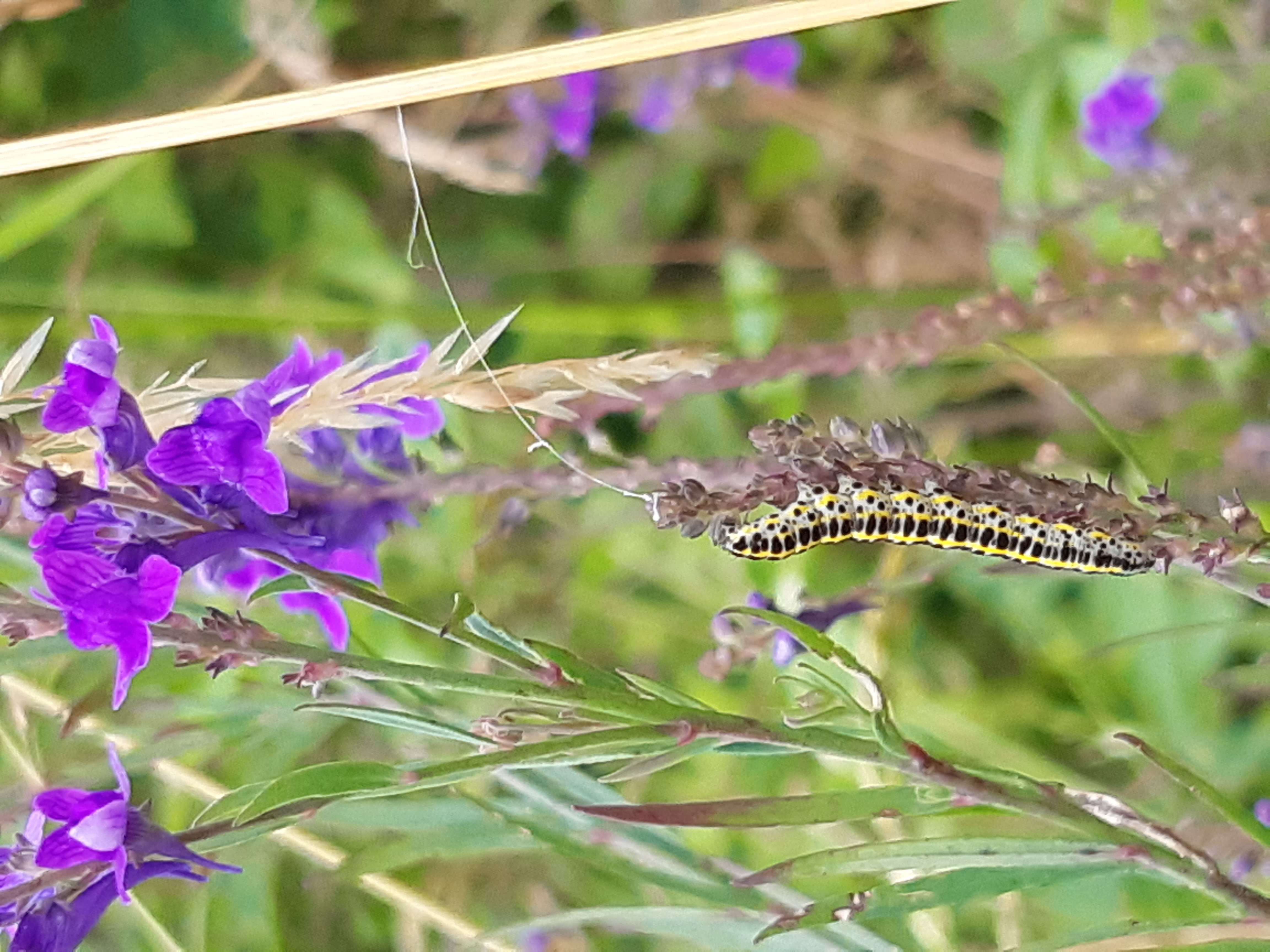
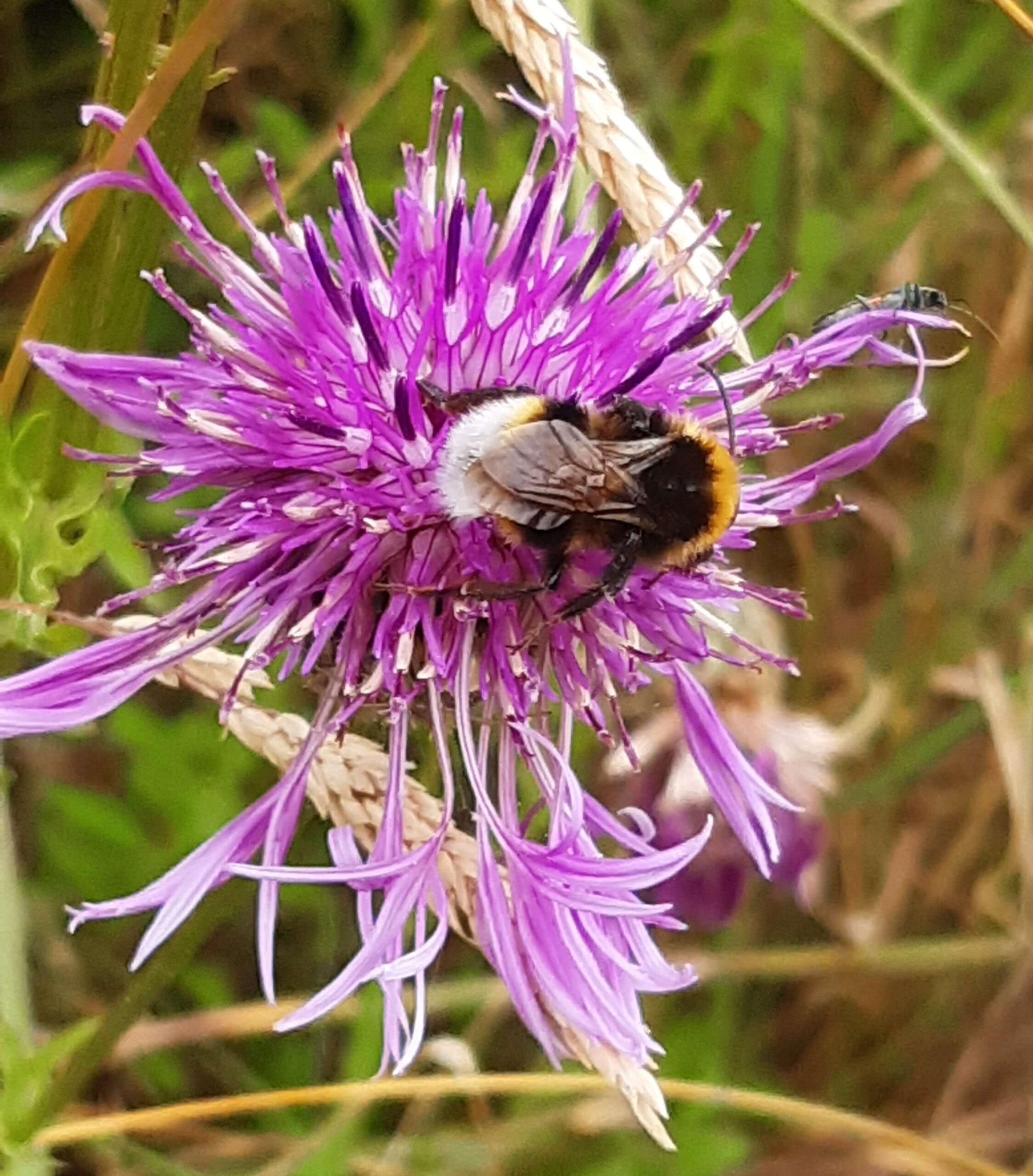
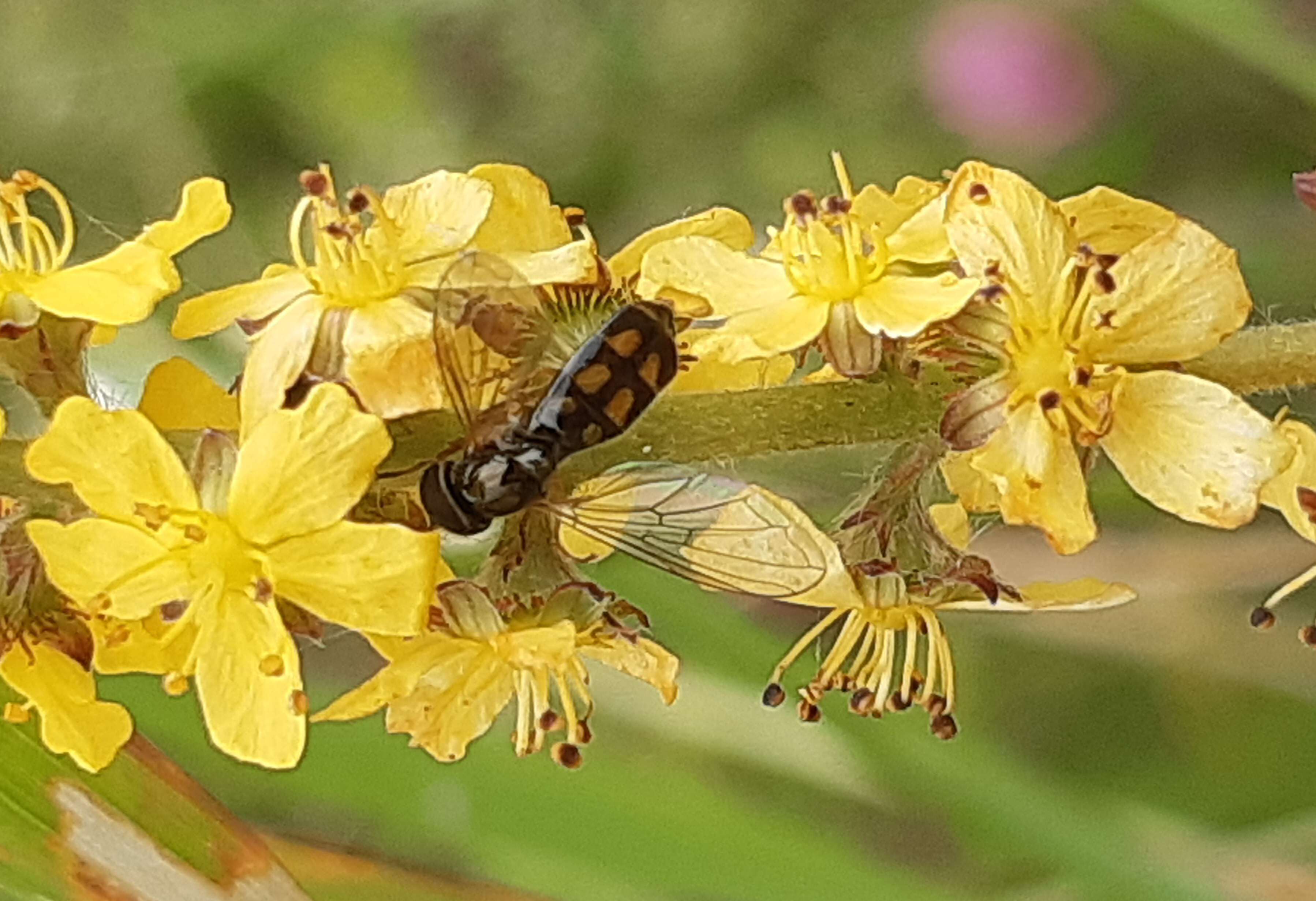
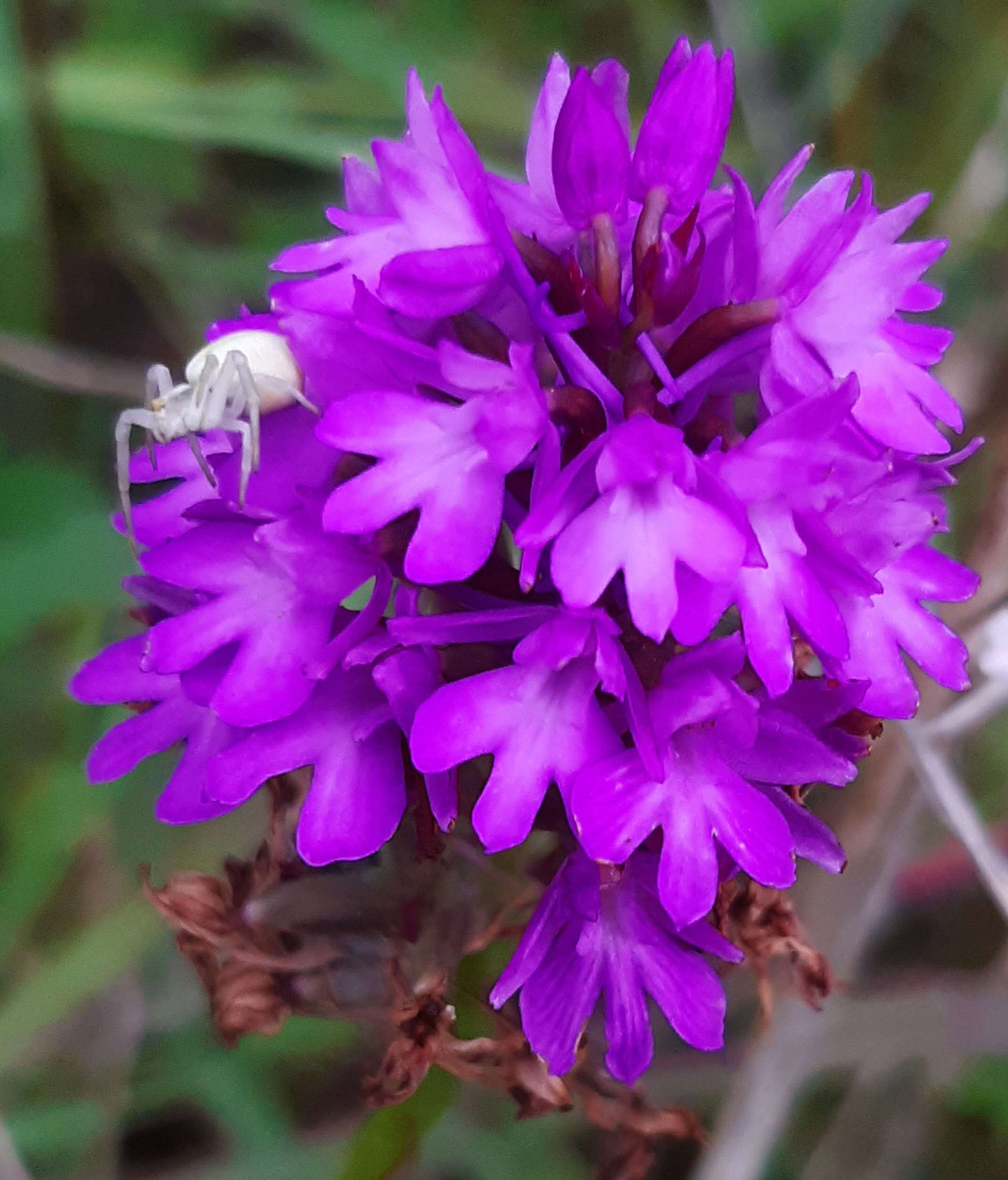
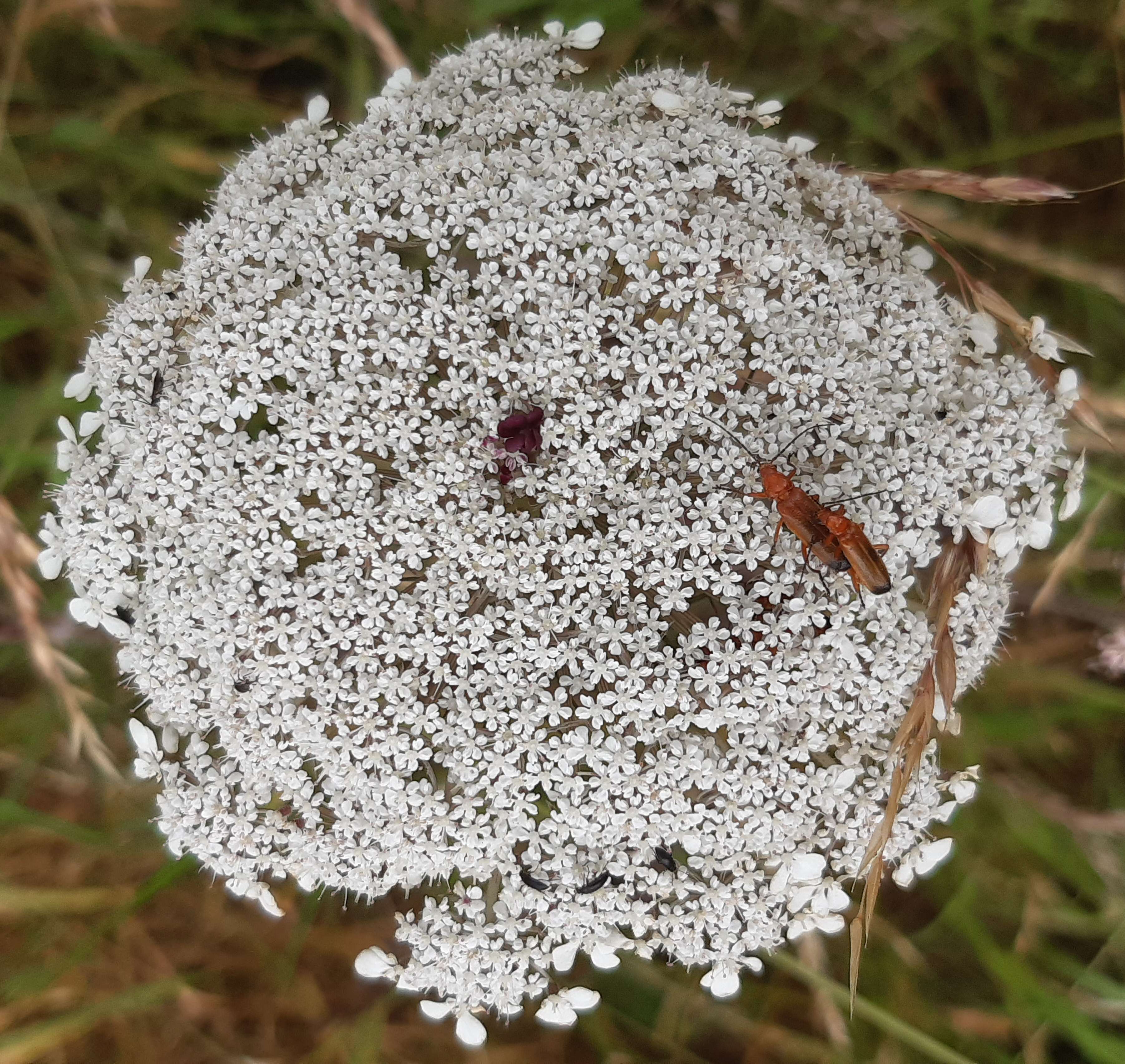
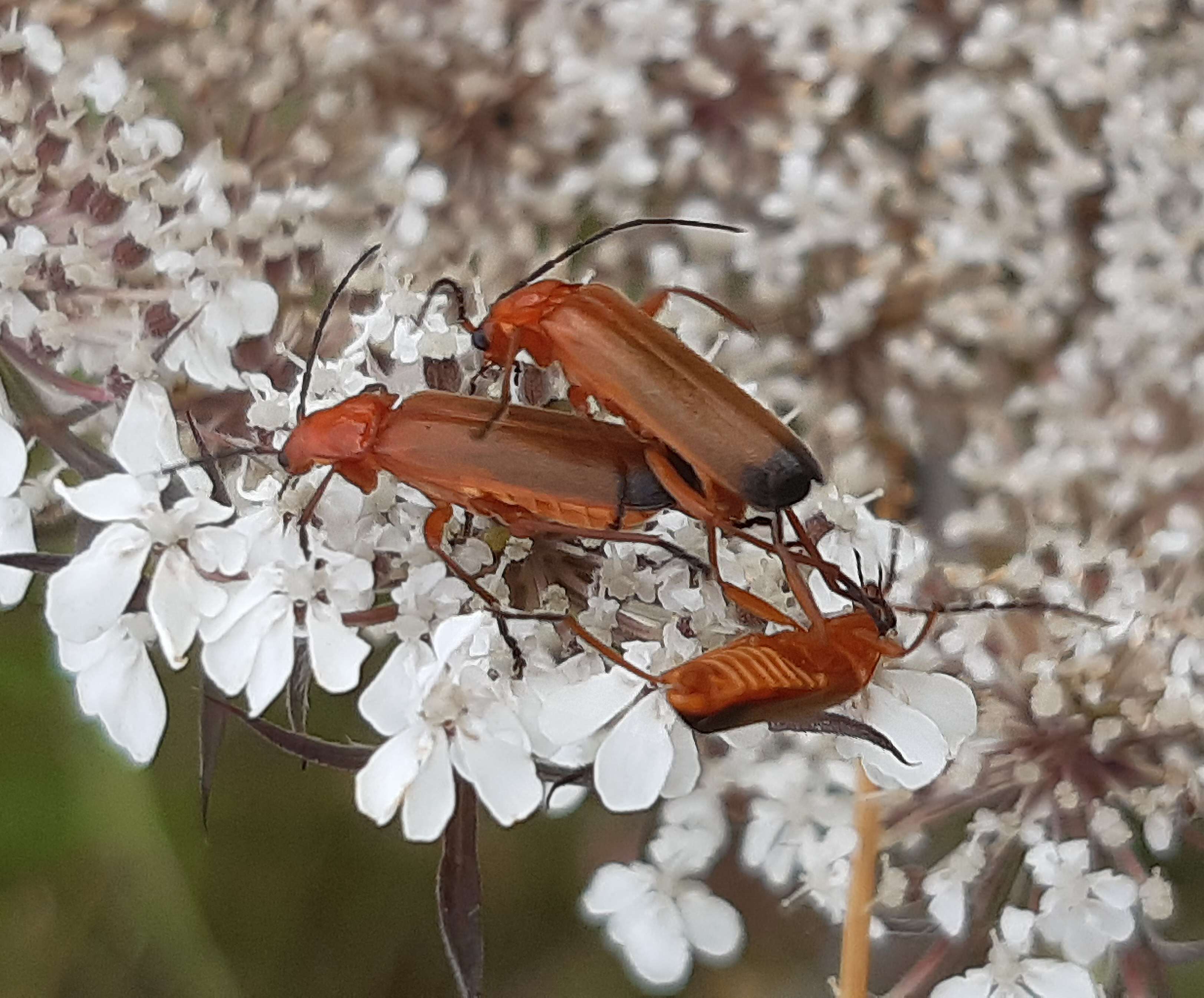
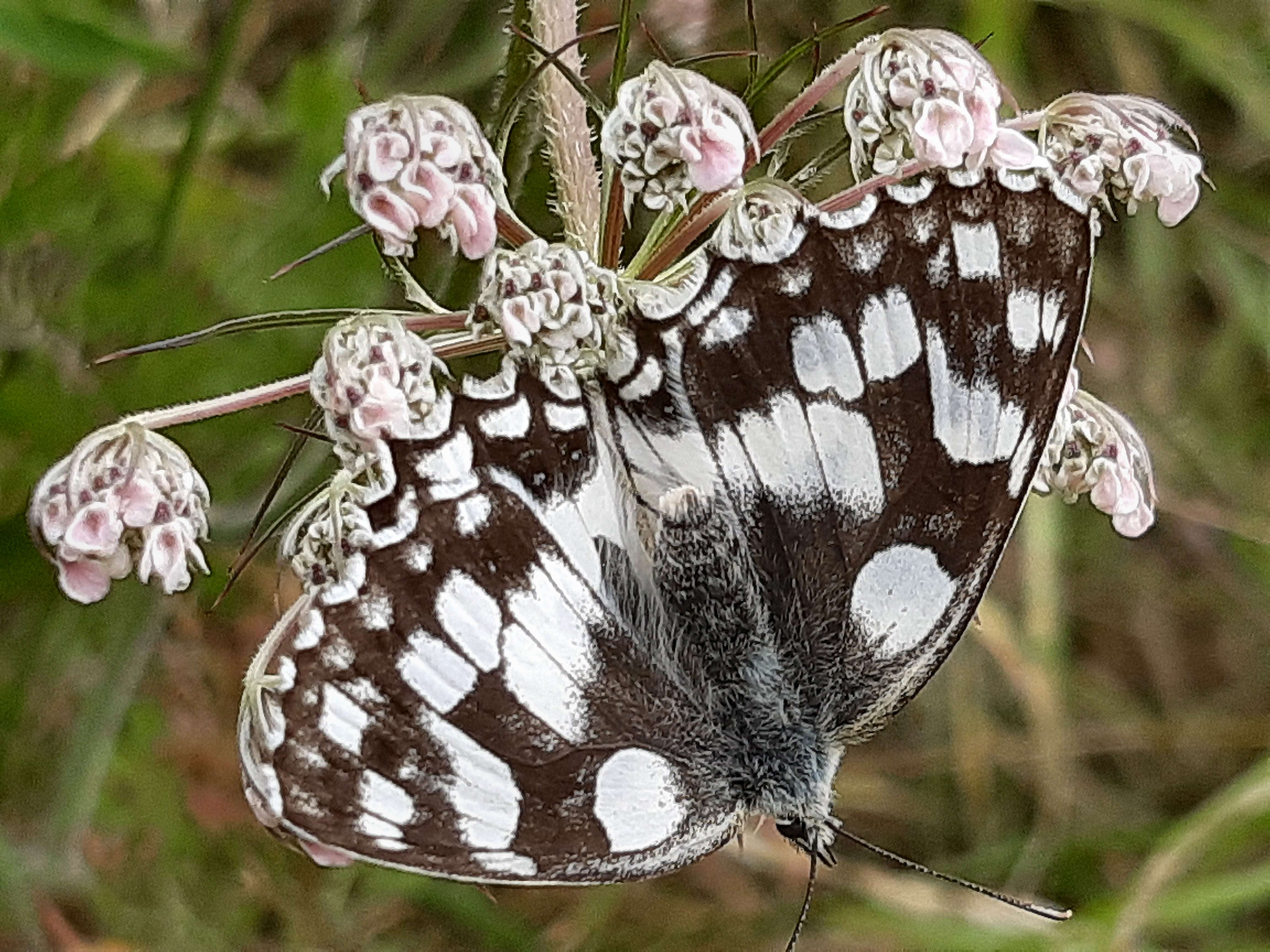
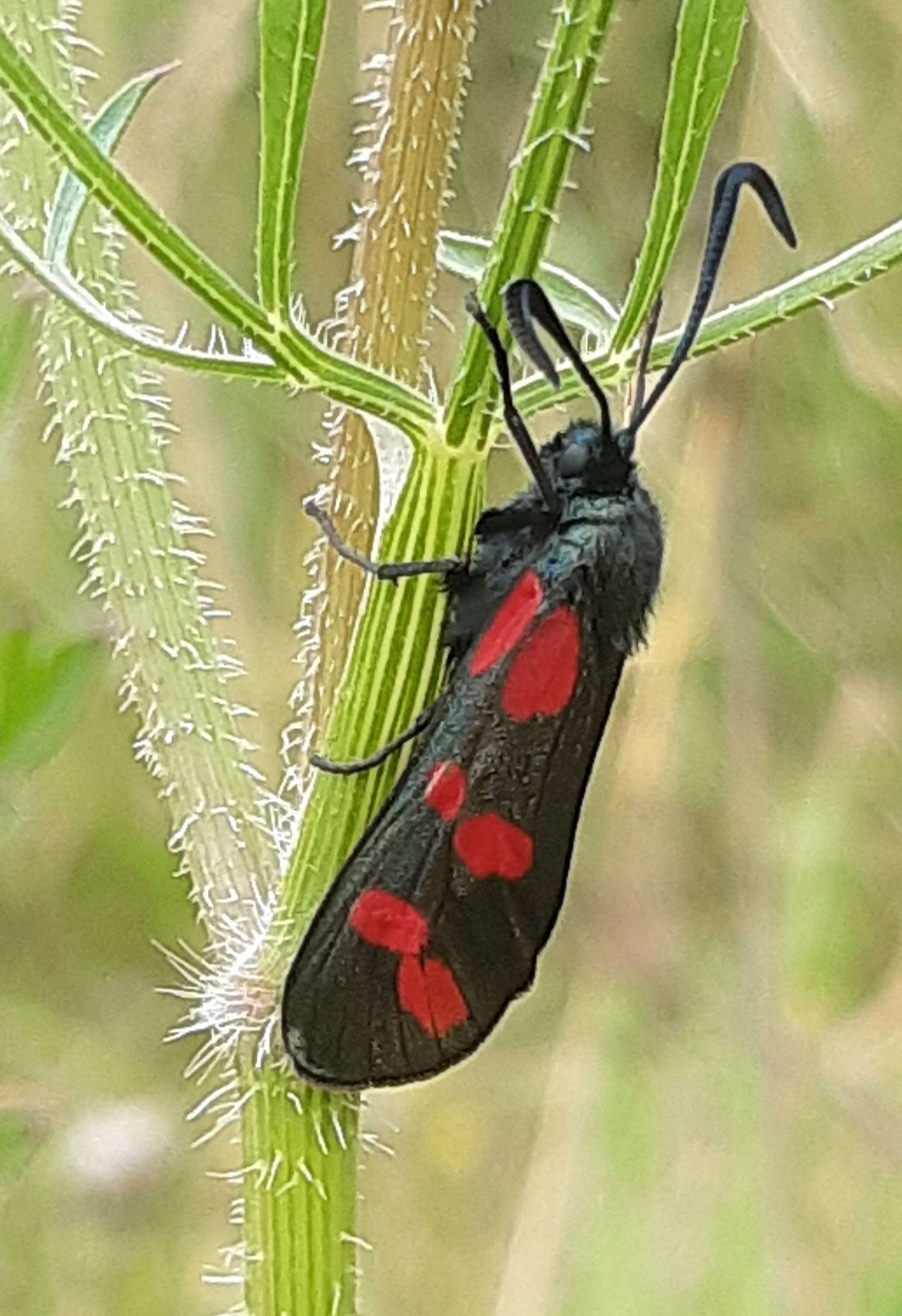

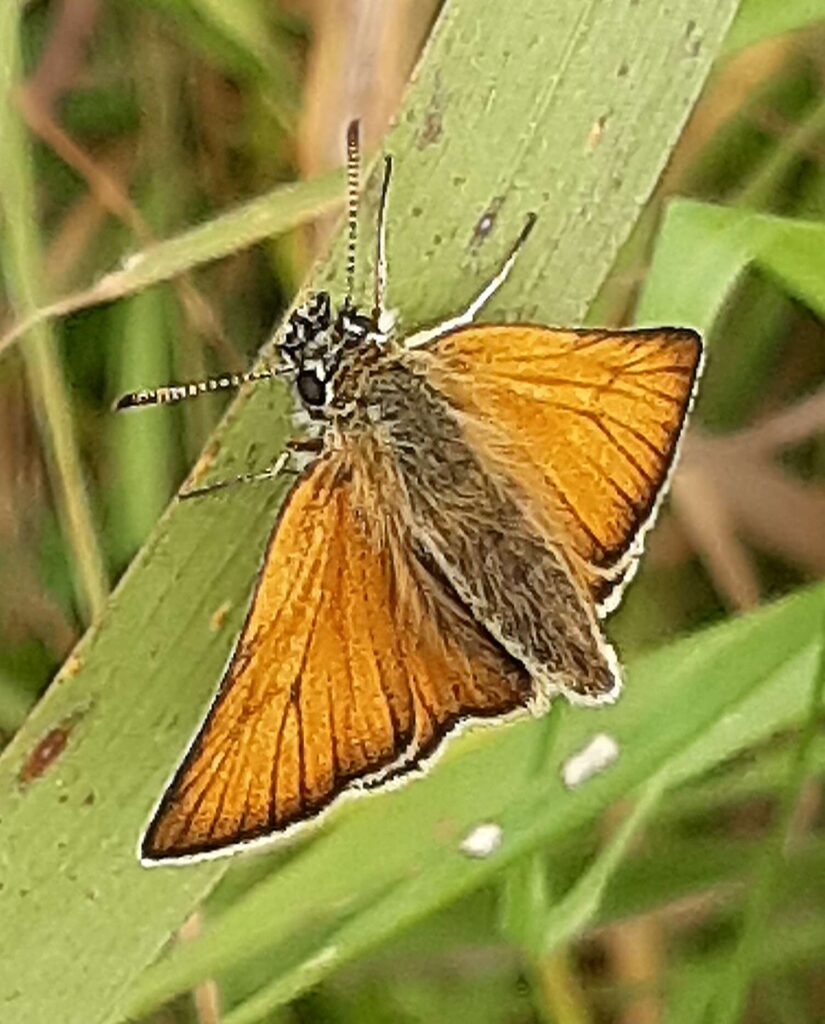
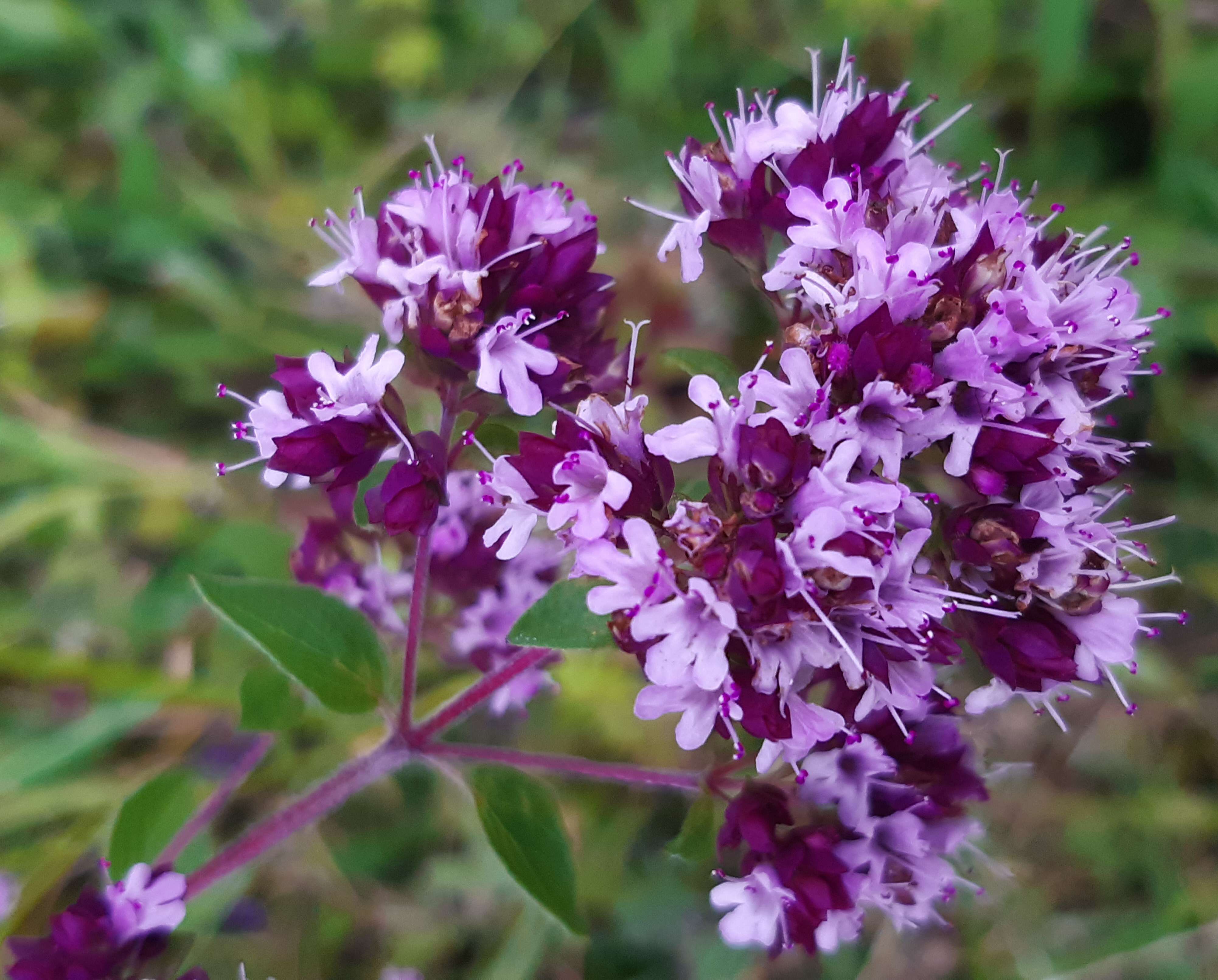
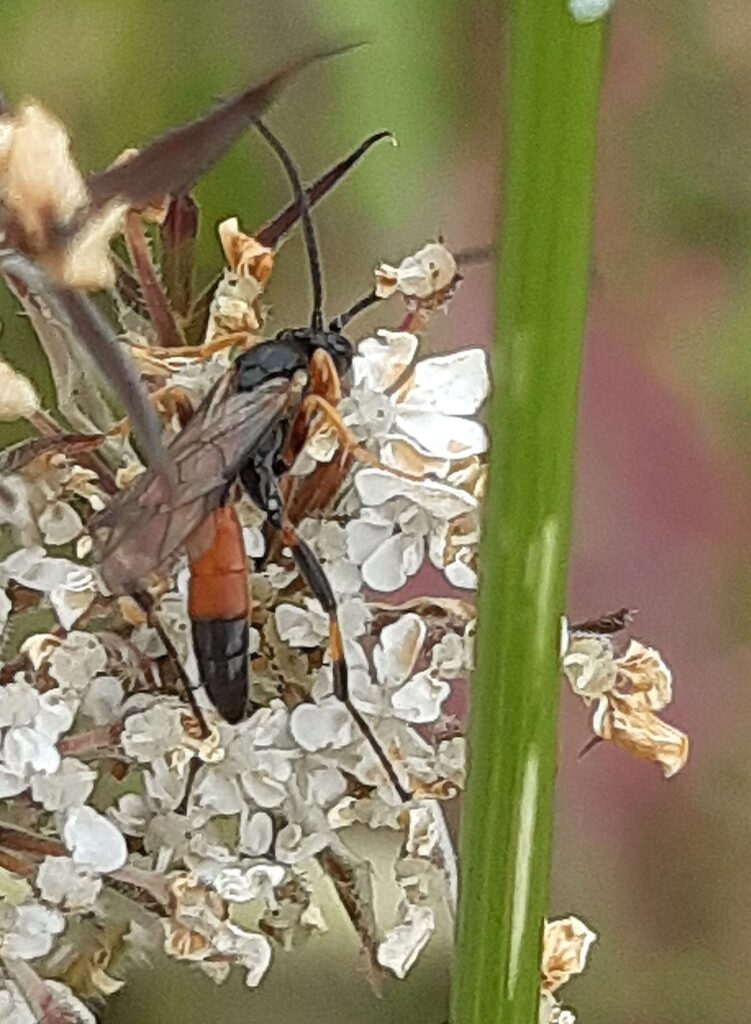
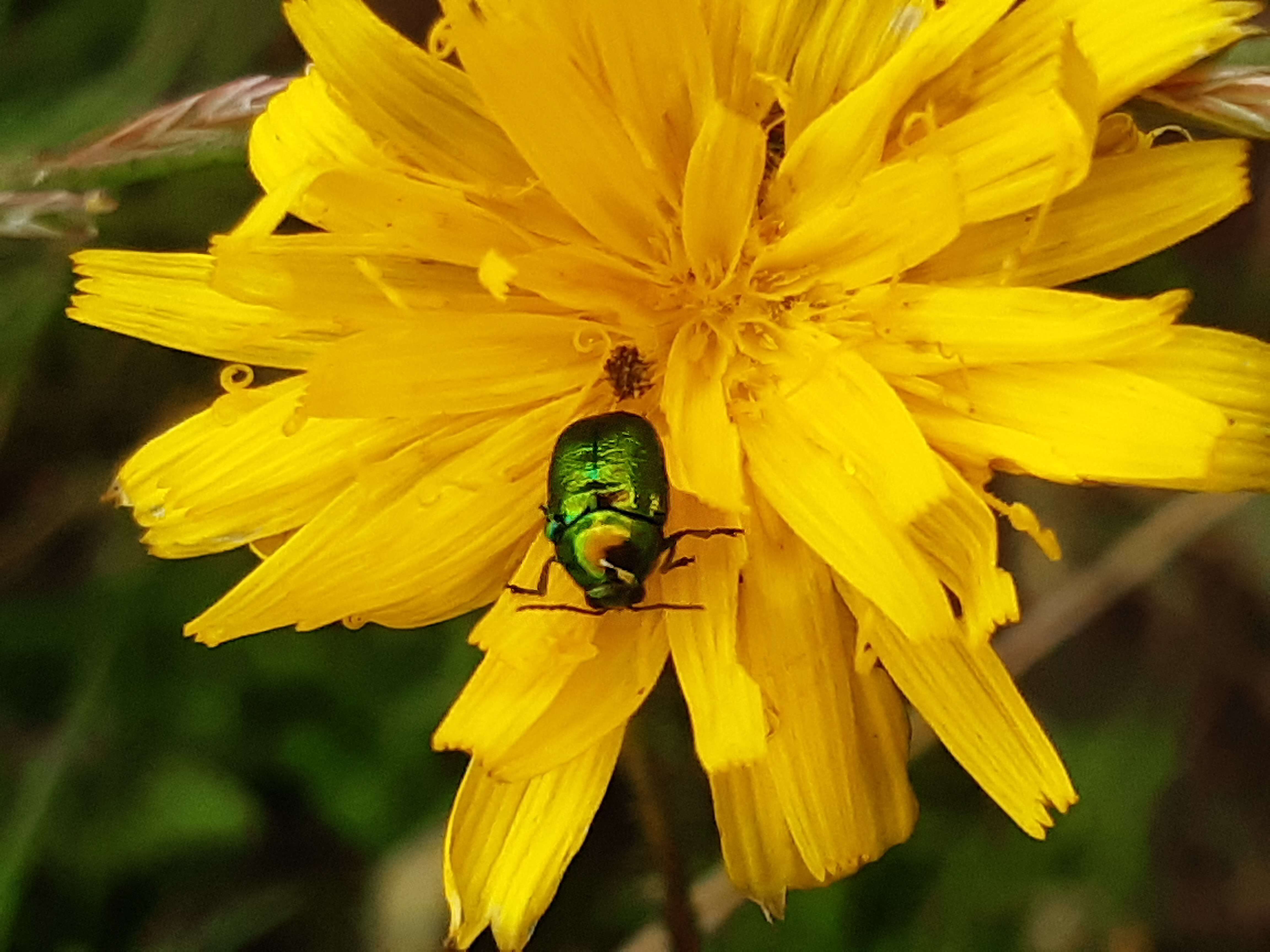
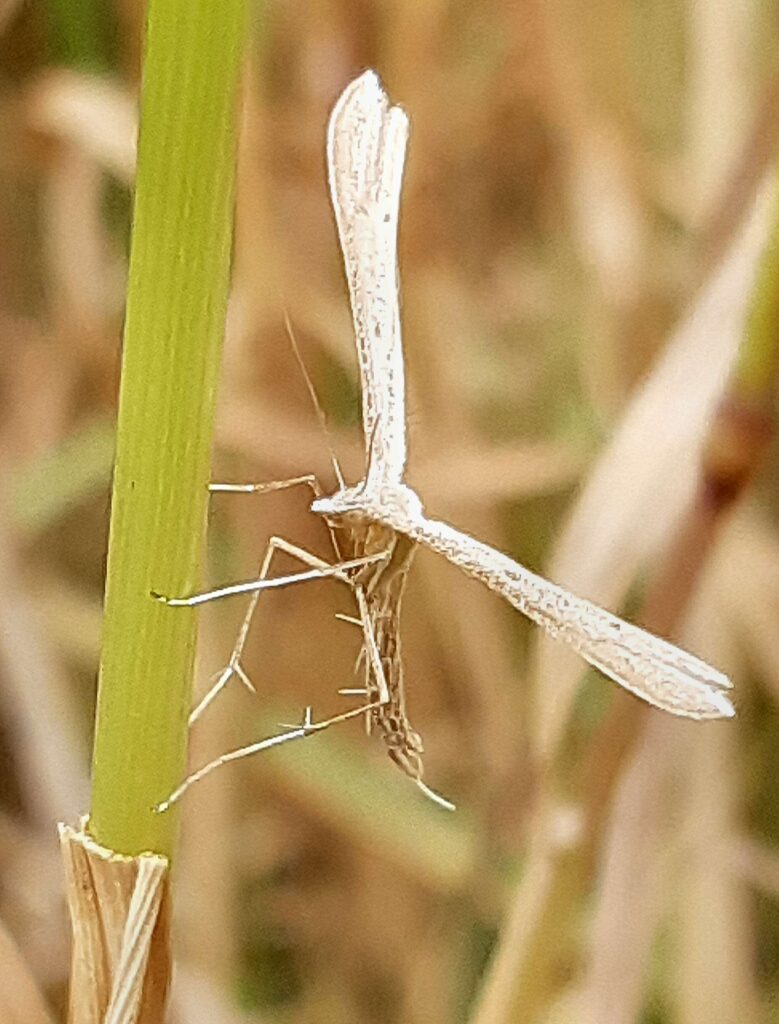
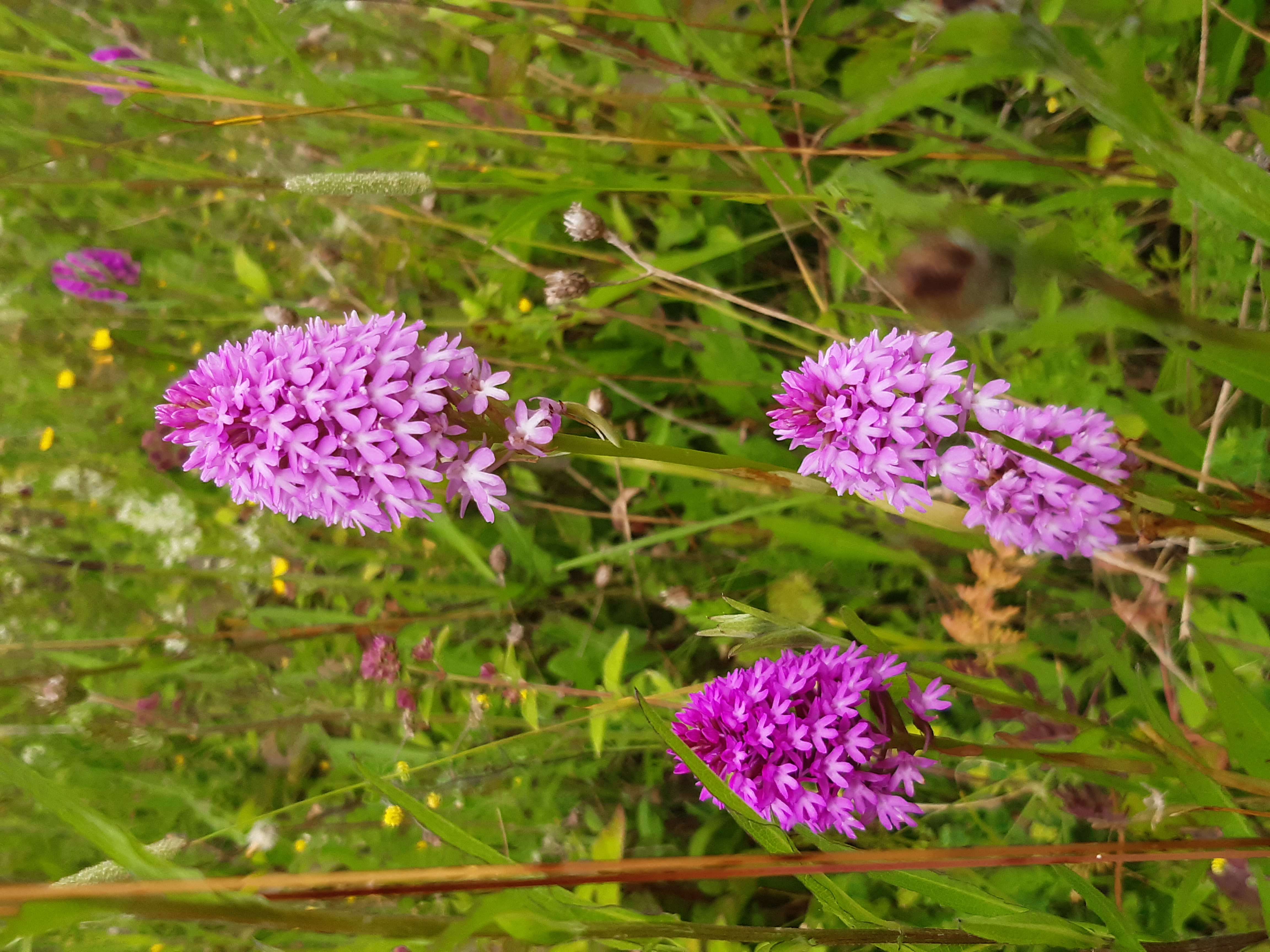
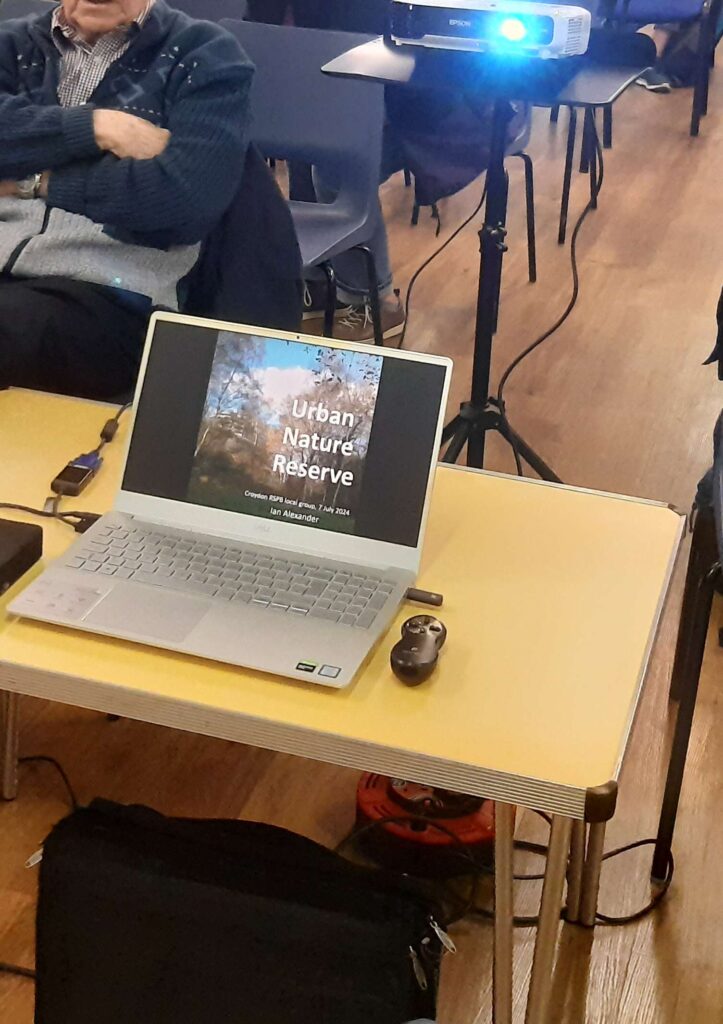
















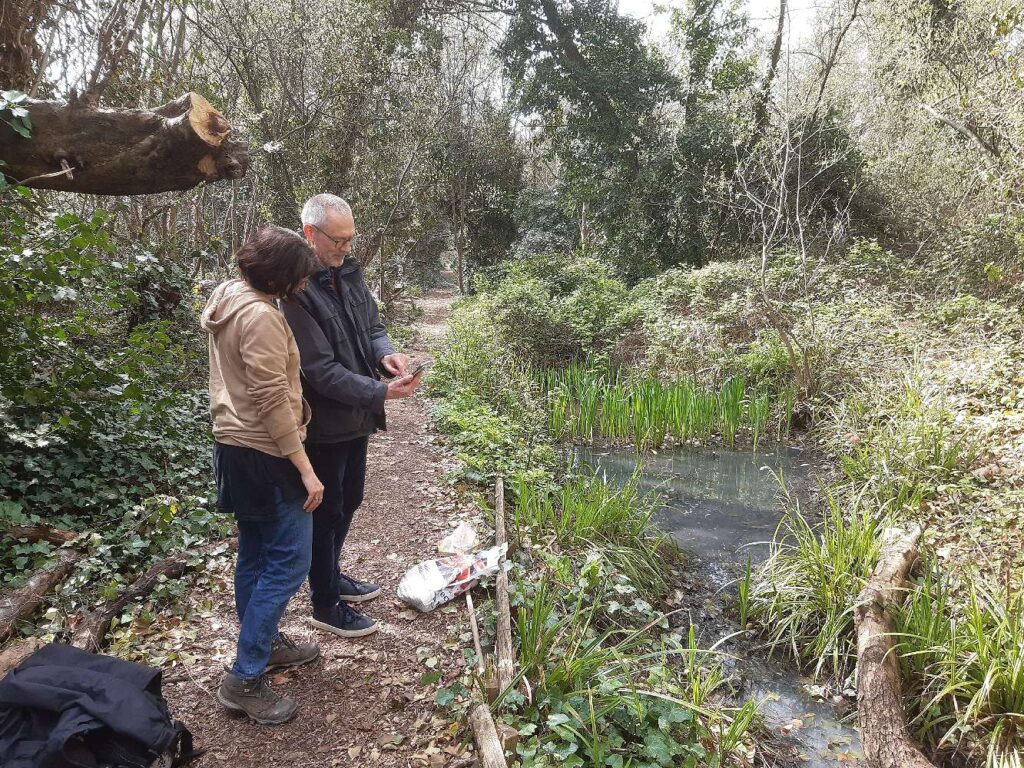
London Wildlife Trust’s ecologist, Alex, has set about finding out what is actually happening to multiple sorts of wildlife across the Trust’s many reserves, including quite a few that don’t have a warden, or even a group of volunteers. This is quite the task, when you consider that each reserve may contain multiple habitats — woodland, meadow, and pond, for instance — and that each habitat may be monitored for different sorts of beastie, like amphibians or pond invertebrates, and that each site may be sampled in each of several places (different ponds), each with multiple micro-habitats (open water, between plants, …), and each sampled repeatedly through the season.
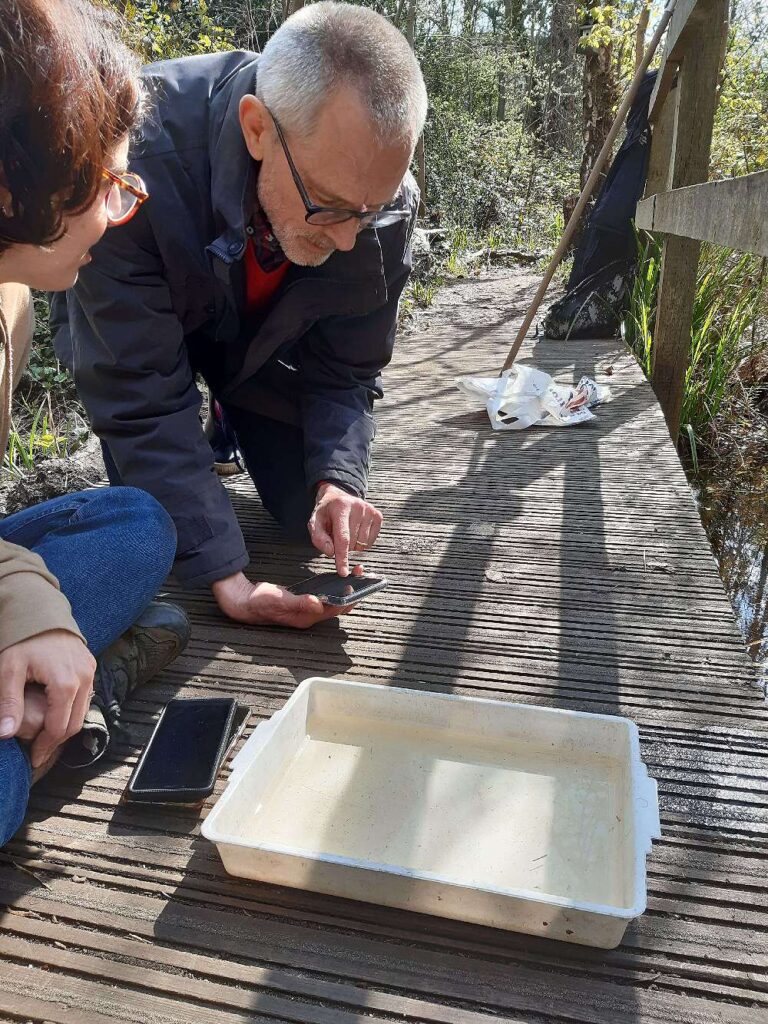
Alex has set up templates for each type of monitoring in the Memento Database app, which has the merit of being free to download, and of being usable entirely offline if people are saving their mobile’s battery or have a wobbly data connection. We downloaded the app and installed her ‘Aquatic invertebrates’ template.
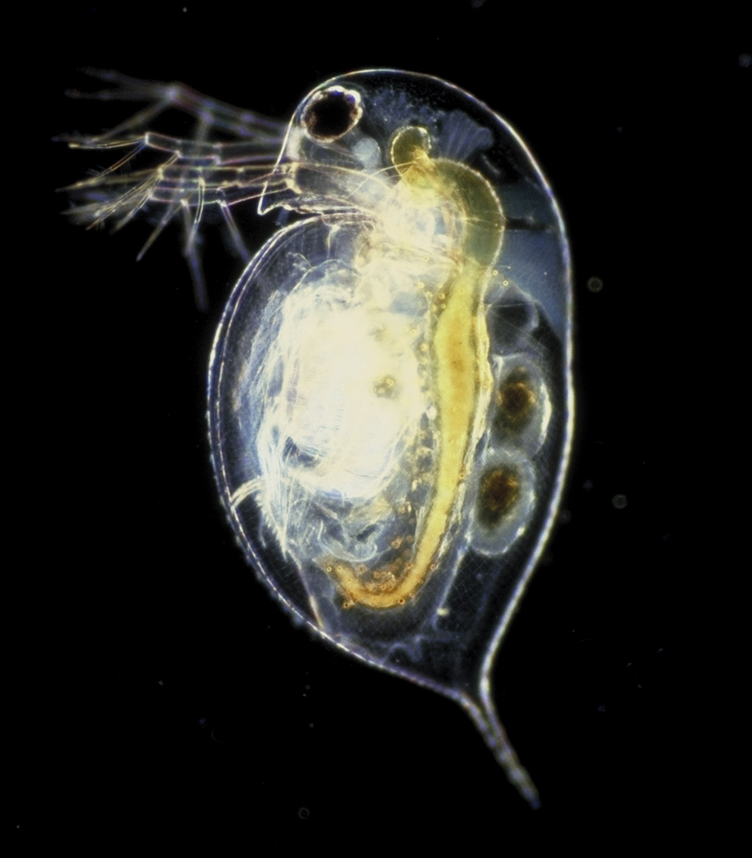
Then we half-filled a plastic tray with pond water and told the template to create a new sample record. We put in our initials, agreed a numbering for our four ponds: the seasonal ponds P1, P2, P3, and the main one P4, and filled in the amount of shade on the water, amount of vegetation, depth of water (the net handle came in handy here as a depth gauge) whether there was rubbish or dead wood or signs of eutrophication or a few other parameters, and then looked VERY carefully at the “water” in the tray to see if there were any beasties in there BEFORE we’d collected our carefully-taken sample. So if you find 5 Daphnia water-fleas in there, you have to subtract that number from your sample when you count it…
One of us — Andy or me — then took the net, swished it about in the chosen area of the pond for 3 seconds, and brought the sample to the tray, carefully washing the net in the tray water.
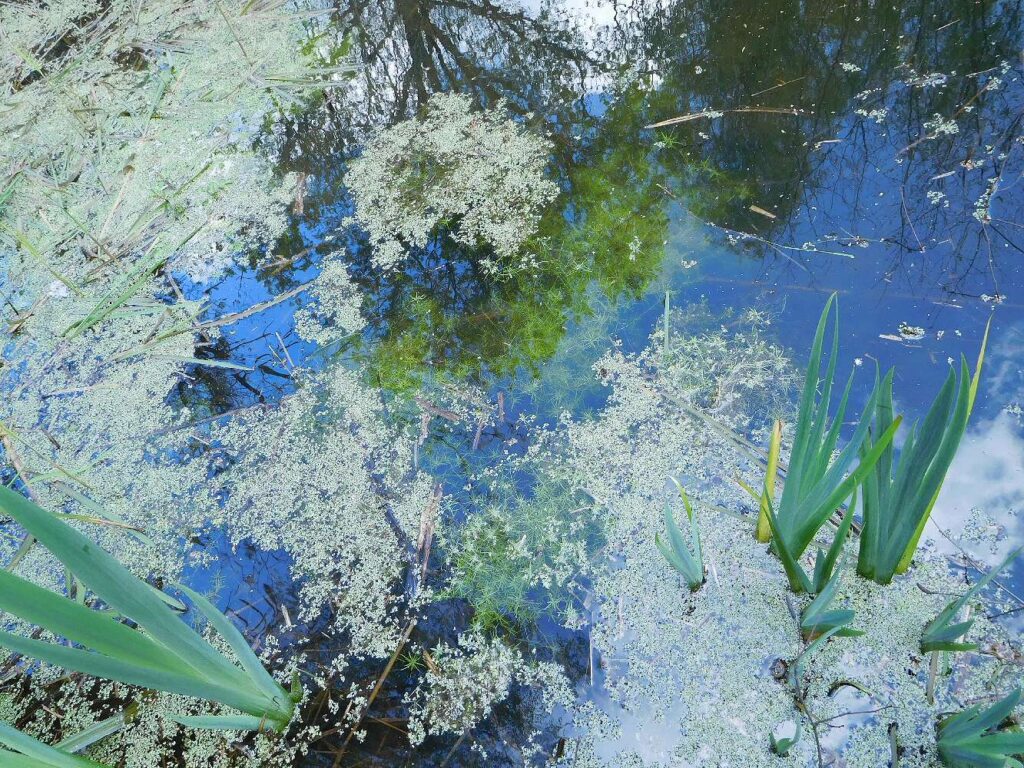
The template had been constructed for Android. Andy had an interesting time working out how to use it on his i-phone. On my Android phone, it turned out to be a good deal simpler to use, though with three tabs to complete, each with a long list of fields of various sorts, and a nearly invisible SAVE button (the critical bit, really), it took a little practice to get used to it.
The other requisite skill, of course, was being able to see and recognize the little beasties in the water. I thought I’d have no difficulty as I know my Midge larvae from my Mayfly nymphs: but a large number of the pondy bestioles (all technical terms here) turned out to be extra-small water fleas too small to make out clearly without reading glasses (at home, naturally), and too deep in the water to focus on with my hand-lens. So for next time, glasses, and my oversized Sherlock Holmes magnifying glass that someone gave me when I was a teenager — absurdly low magnification, but a wide field of view and a large depth of field. Aha.
The smidgeon-sized millibeasts on which the survey depended (at least on this lovely April afternoon) were the tiniest Daphnia I’d ever seen; equally tiny Cyclops; and (if possible) even smaller Water Mites. My first reaction was, we’ll never manage to ID those things, let alone count them. But you know what? It’s possible, even with a bit of presbyopia. How? Well, the trick is to rely on the “jizz”, the plane-spotter’s “general impression, size and shape” (yes, that must have been “giss” originally, but pronounced jizz anyway), i.e. how it moves, what sort of smudge of colour you can make out, and any hints as to what shape the thing would have if you were actually able to pop it into a watchglass and peer at it properly with a binocular microscope (at home, advisedly).
Daphnia are basically oval, and have a slight reddish hue to them. Cyclops are slender, tapering to a point at the tail, and look greyish. If you’re really lucky, you get a female Cyclops with a pair of obvious egg-sacs either side of her tail.
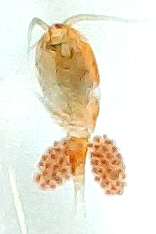
So you can tell Daphnia and Cyclops apart even if you can barely make them out, because they give a different impression. And, Daphnia swim on their sides, thrashing along with their feathery antennae; while Cyclops swim on their bellies, flicking their antennae like an athlete doing butterfly-stroke with their arms. Both therefore move in little jumps or saccades. The other micro-bestiole that we had in numbers today was the Water Mite. They’ve got 8 legs and a basically round body (the head does not protrude). They swim with their little legs, rather smoothly and continuously … so they don’t look anything like water-fleas except in size.
So we counted the animals in each sample. Coming to the main pond was a pleasure, as it’s a beautiful spot; the sun was warm; and the first thing we saw (rising to the surface of the pond) was a nice big male newt, the first of the year. More, Alex identified it as a breeding Male Palmate Newt, not our usual Smooth Newt: its tail goes down to a point, making it seem relatively short, and its hind feet are webbed.
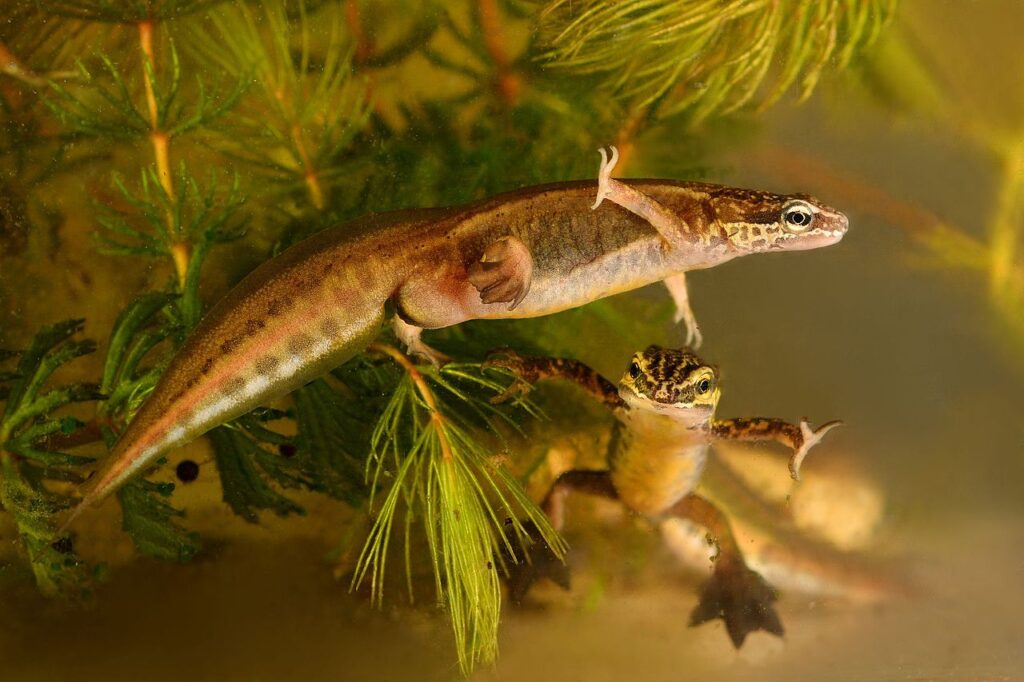
I added it to the “Notes” field (this was a record of invertebrates). Andy and I found that we were getting used to the template, and filled it in a lot more quickly than our first efforts. I saved and exported the sample record to a .CSV data file, and pressed the email button. To my astonishment I only had to make a couple more clicks and the whole dataset sent itself off to Alex for analysis.
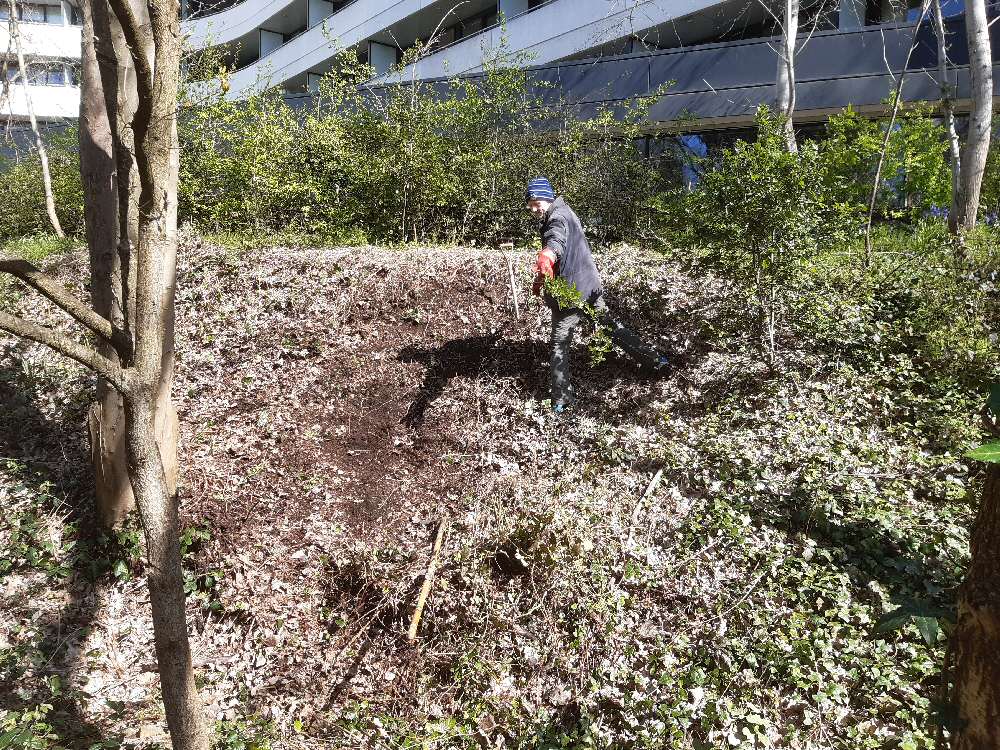
For many years, we – London Wildlife Trust and its volunteers – have mainly tried to keep Gunnersbury Triangle open and usable: the paths not blocked by fallen trees or too tightly hemmed in by encroaching brambles, edged variously with low fences, deadhedges, a ditch or two. lines of loggery posts to nudge people to stay on the path while giving the stag beetle larvae a bit of habitat, or failing all else just long heavy logs laid on the ground end to end.
Apart from that, we’ve done what we can to stop the meadows vanishing under bramble, repaired or replaced benches and boardwalks, and left the rest of the reserve more or less to its own devices.
That has meant that much of the reserve has been heavily wooded, with a rather dense canopy, a shaded woodland floor, and a mass of ivy and bramble that has got pretty much everywhere. That’s a class 3 or degraded woodland, where the ideal is a pretty and species-diverse floral ground cover – a bluebell wood, say, or dog’s mercury, or any of the flowers adapted to pop up in spring before the deciduous trees that form the canopy come into leaf and cut out the light to the smaller plants beneath them.
Well, at last we’ve started to have a go at habitat restoration. The areas most suitable for the effort are those where the tree canopy is thinnest, so forest floor herbs have a decent amount of light throughout the summer. The north bank is clearly an ideal choice here, as it’s south-facing and in many places relatively open; it’s also less likely to be trodden down because of its steepness. If it has a disadvantage it may be that it’s very free-draining, and may get dry quickly in a hot summer.
Be that as it may, we’ve now spent a couple of sessions digging out brambles, clearing dead wood, and pulling the ivy from the ground. A heavy metal rake makes quick if tiring work of removing the ivy. With all the rain we’ve had recently, all but the biggest brambles come out satisfyingly and permanently by the roots when pulled, which they certainly don’t in a dry period.
In the photo above, you can see an uncleared bit of woodland floor on the right, and a cleared area on the left. We managed to clear a 30-foot length of the north bank in one session today. Maybe we’ll get all the way up to the rather fine bluebell patch next time.
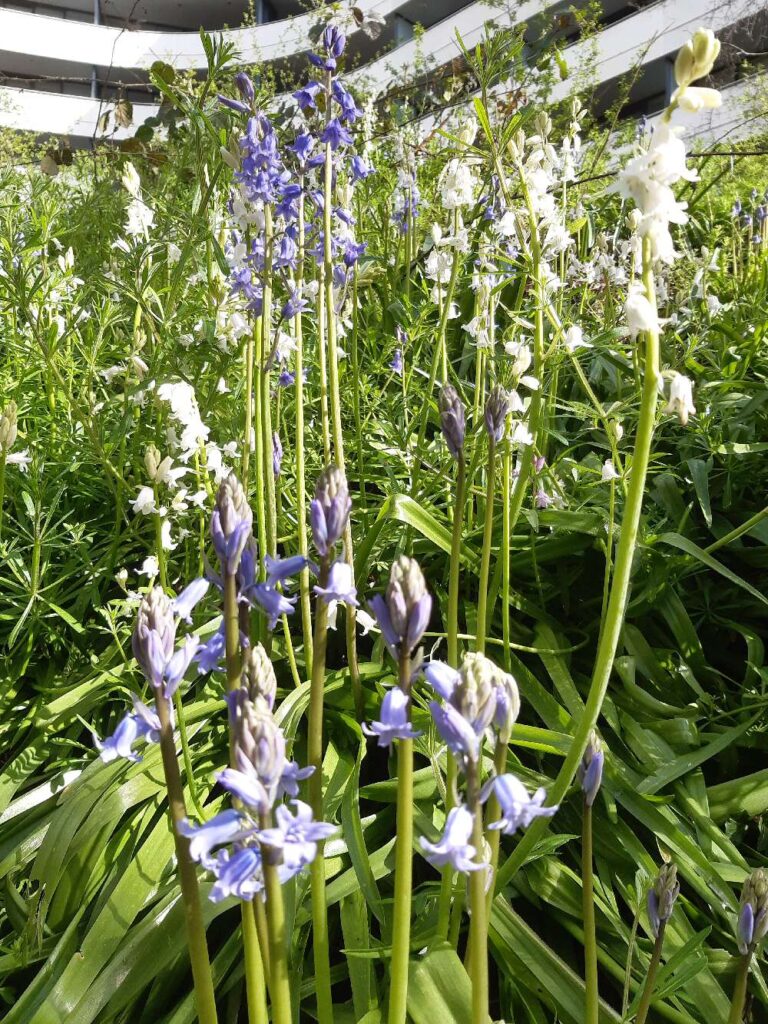
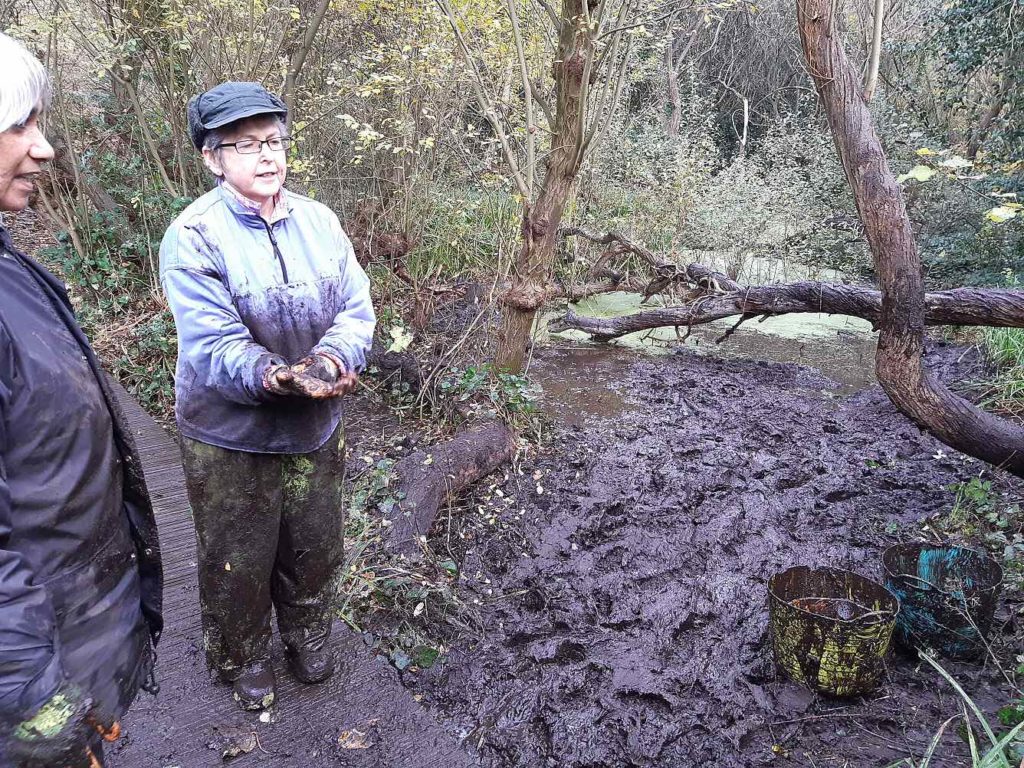
Well, it’s late November, the animals aren’t breeding, and the flowers are mostly not flowering (Rowan and Cotoneaster are honourable exceptions). So, it’s the perfect time for clearing out the Wet Woodland (Carr) to keep it looking, well, Wet, rather than getting more and more overgrown and full of leaf litter until it turns into good old ordinary dry woodland, or Mixed Temperate Forest as an ecologist would say.
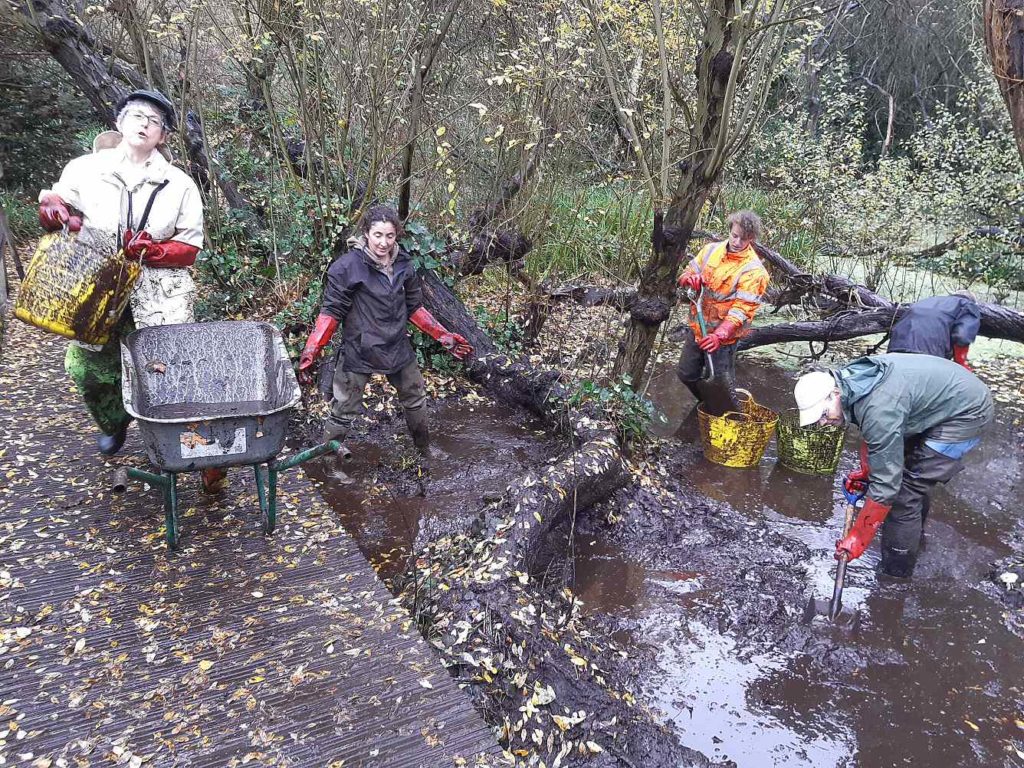
There’s always a debate about why we do this sort of thing. Shouldn’t we just do George Monbiot’s Rewilding thing and leave nature alone? Well, we could. Then the reserve’s pond, wet woodland, meadows, grassy banks, and demonstration flowerbed would all go through the succession to mixed woodland, and we’d have an end-to-end canopy of trees: not a bad thing you might say.
But we would lose much of the diversity of habitats and of species – no pond life, no grassland flowers or grassland butterflies, for instance. In a large enough area, that would be fine: the rivers would flood and meander, create new oxbow lakes, mudflats, and shingle banks, which would be colonized and grow up into varied ponds, wet woodland, meadows, and forest, just as you’d hope.
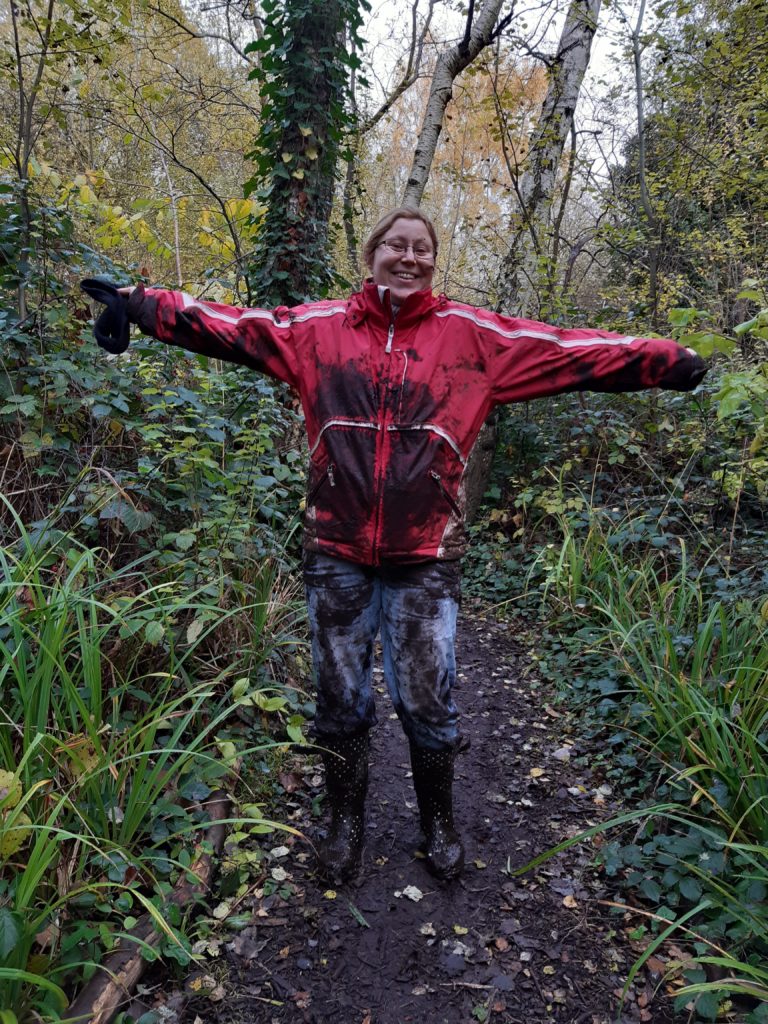
Only one small problem: you need to include a river’s catchment area and flood plain in the reserve. That’d be the whole of Oxfordshire, Berkshire, and London, roughly…
So, to be practical, in an urban nature reserve you only get a small area to conserve, to allow people to visit to see and feel and smell and touch nature, and to teach children (and adults) about nature. Those are worthy aims, and they’re the raison d’etre of London Wildlife Trust. To manage that, one needs to maintain a bit of diversity of habitats and of species for people to see and learn about. And that means holding back the natural succession so that not every inch is a tree canopy, splendid as canopies are. And that means having volunteers scoop mud, mow grass, and pull out tree seedlings, all the while trying to leave enough seeds, eggs and other life-forms in place for the reserve to burst back into life at all stages of the succession.
Yes, we know George Monbiot calls all that “gardening”: but really, it’s not. We’re just creating the conditions for nature to do its own thing, or rather, a lot of its different and wonderful things.
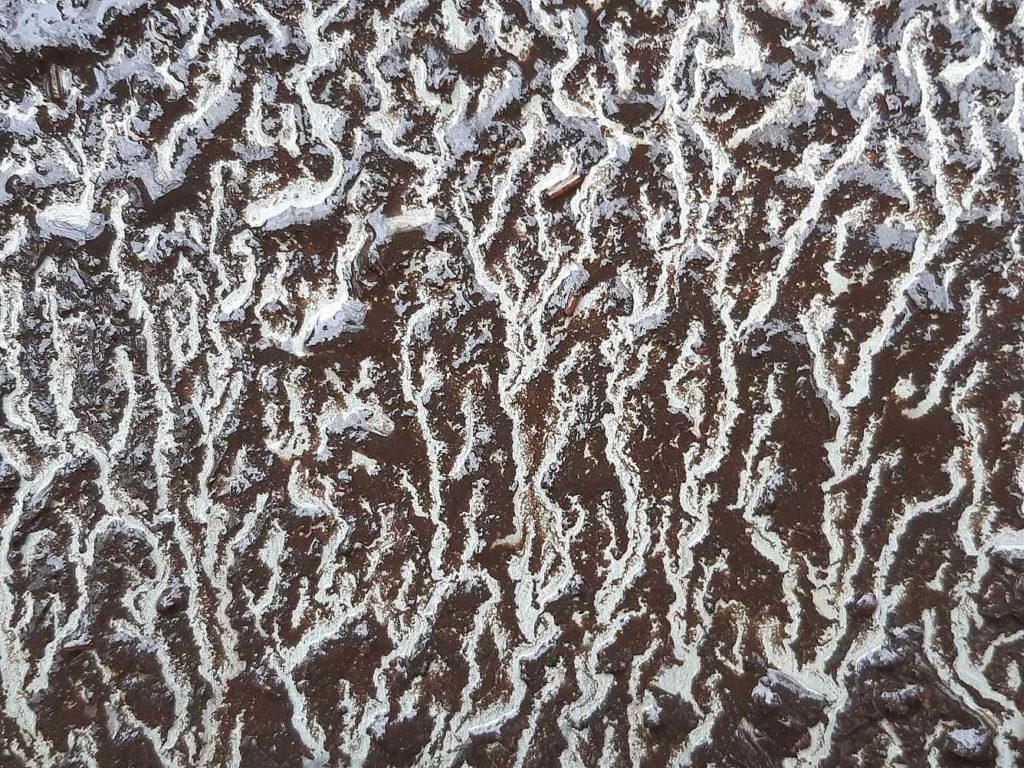
Actually, one can hardly help letting nature do its thing. It does it even in the mud in a wheelbarrow!
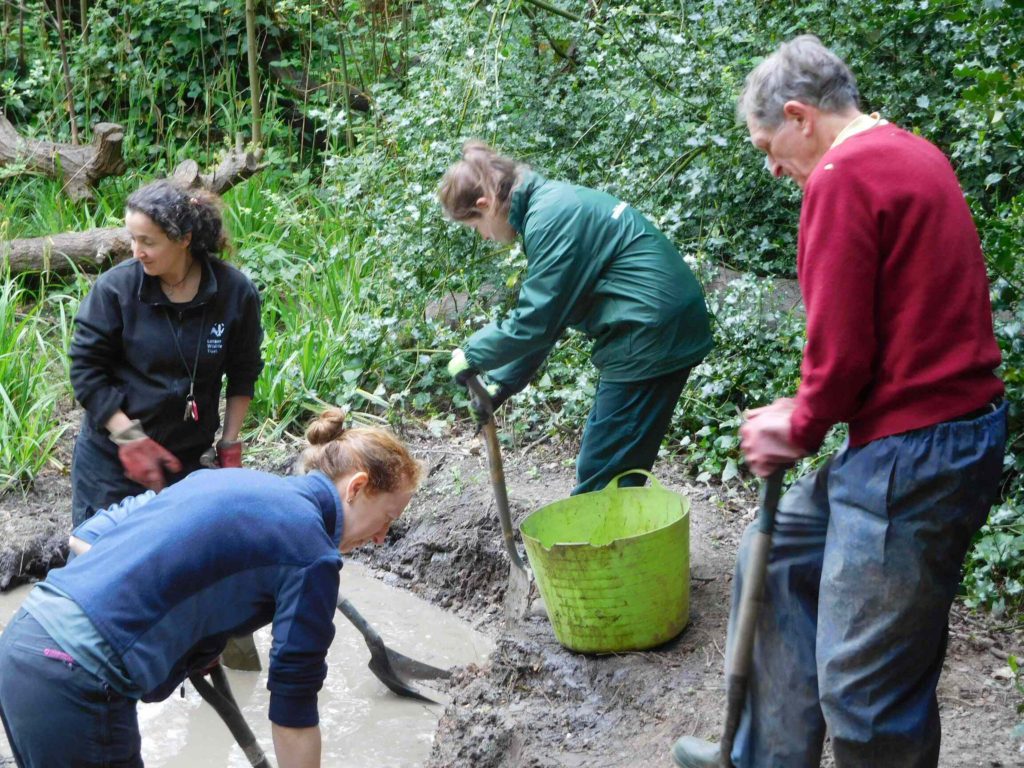
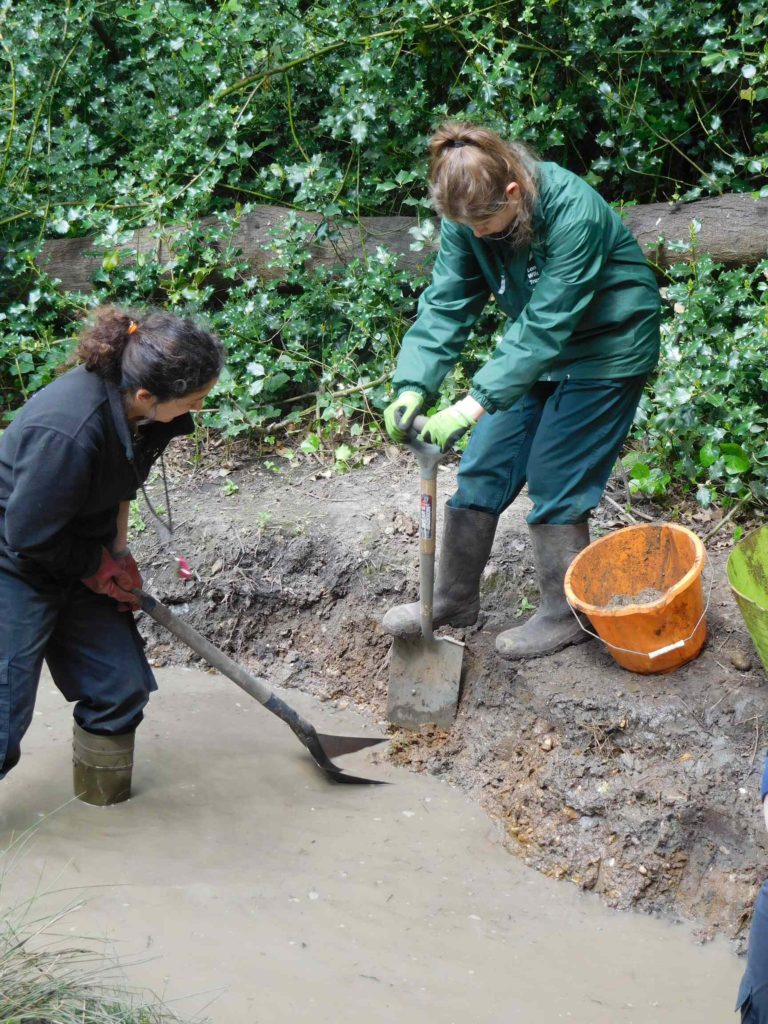
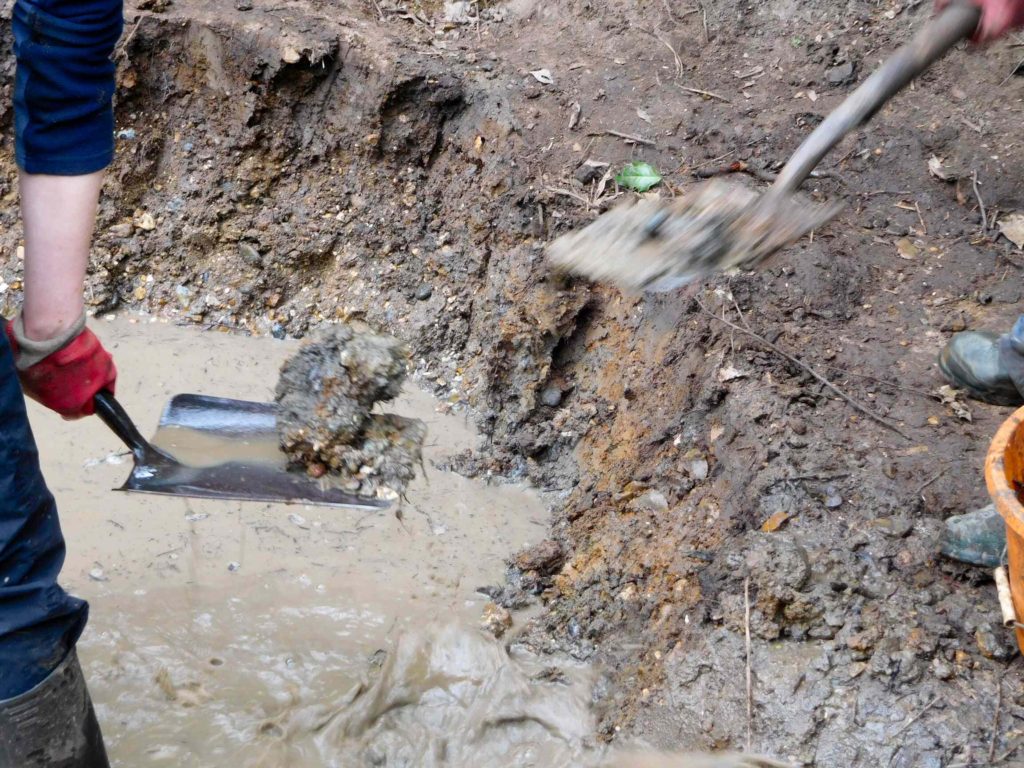
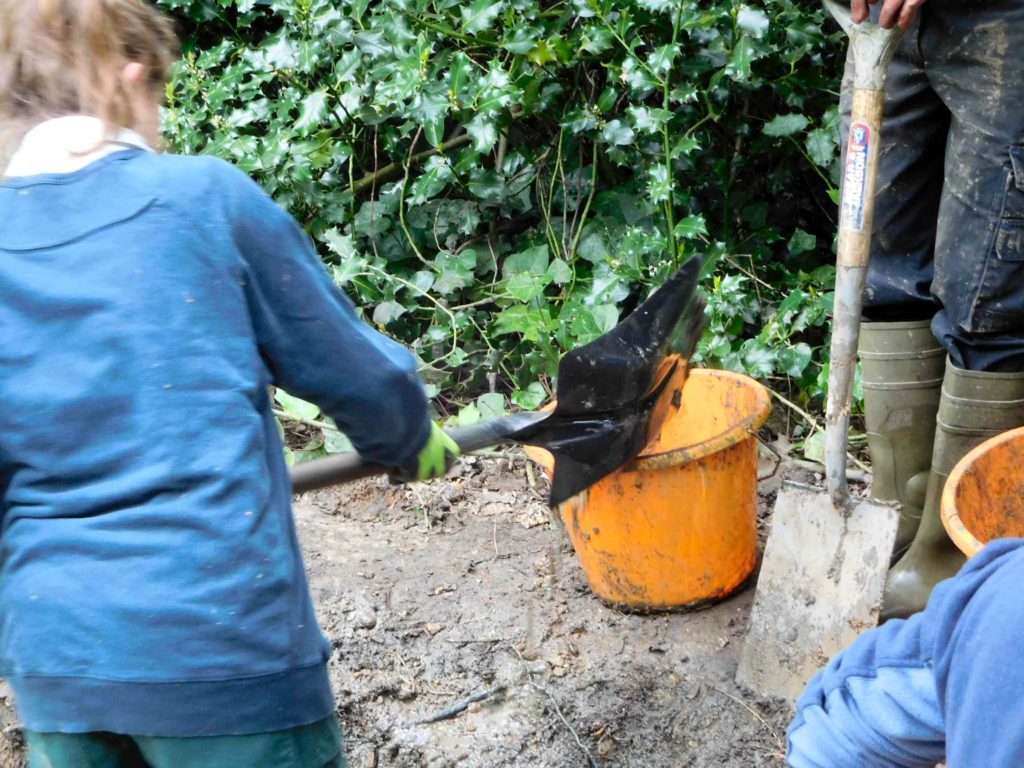
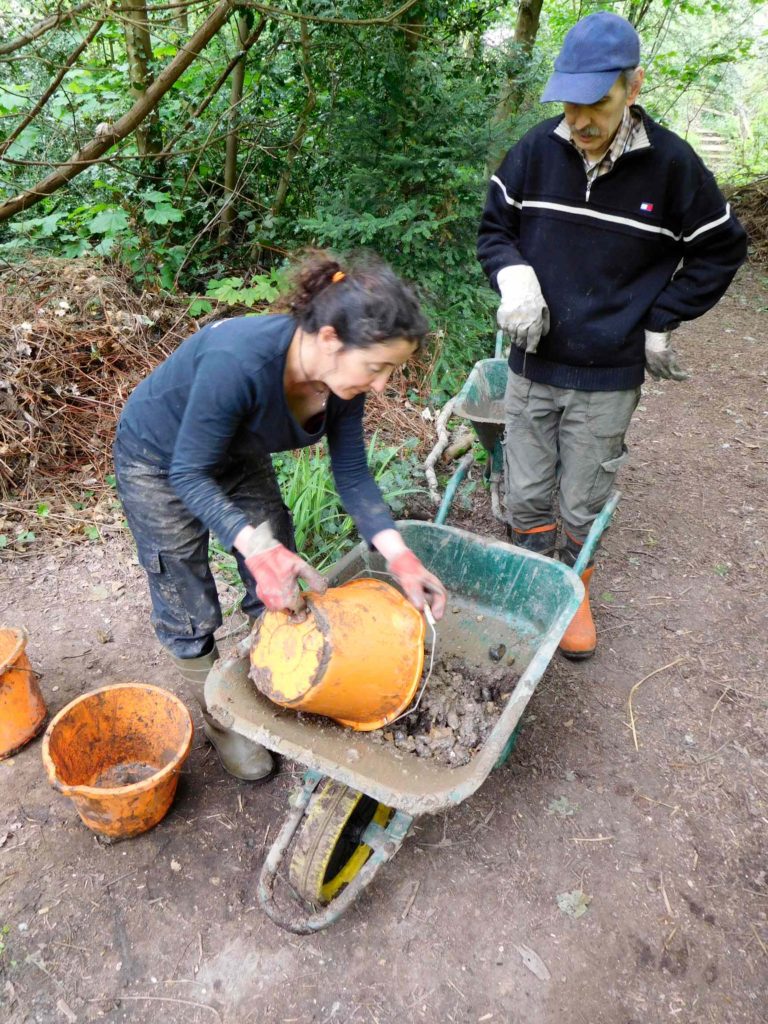
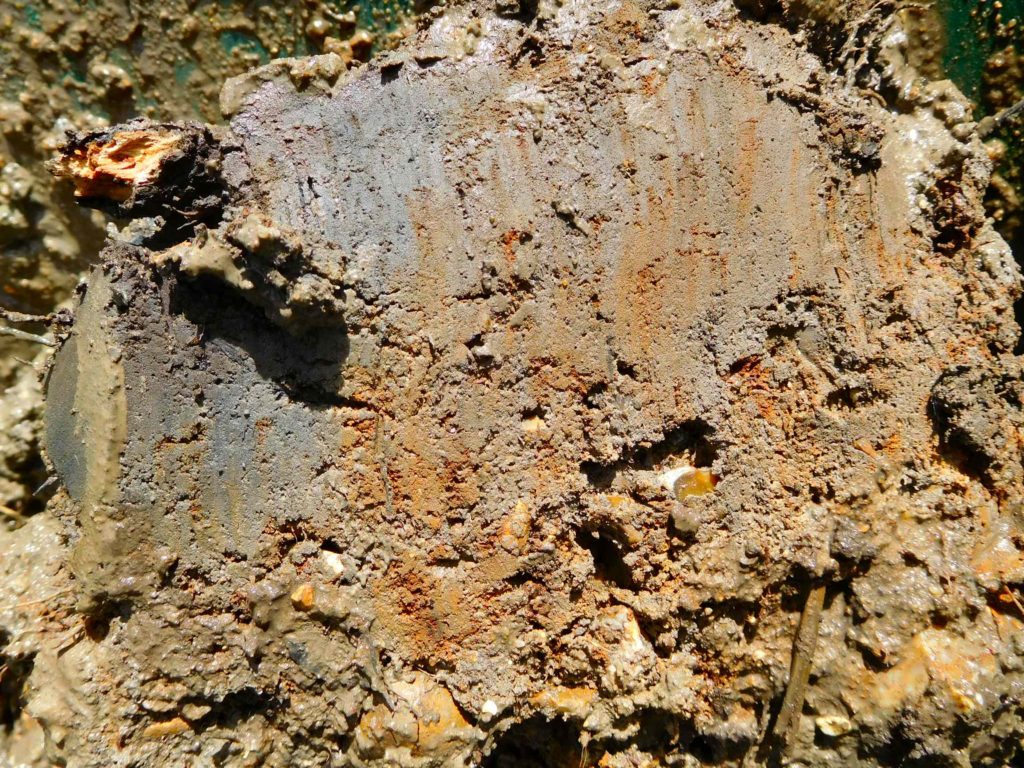
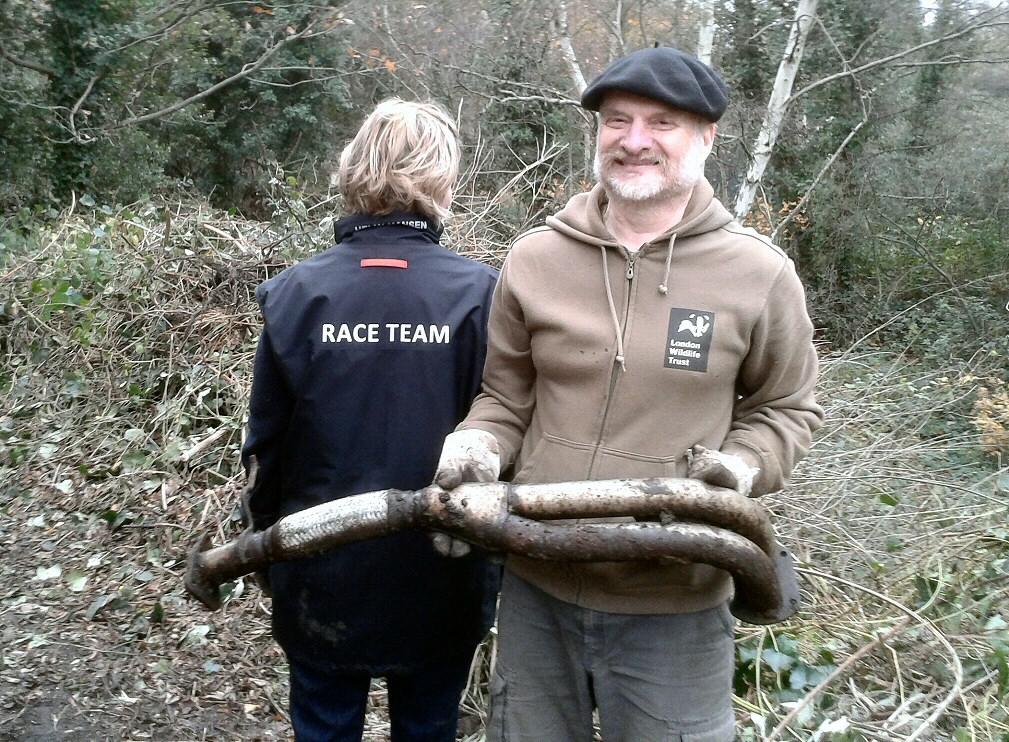
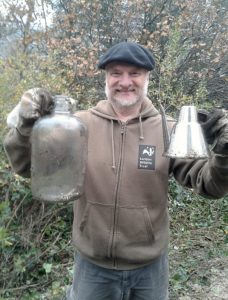
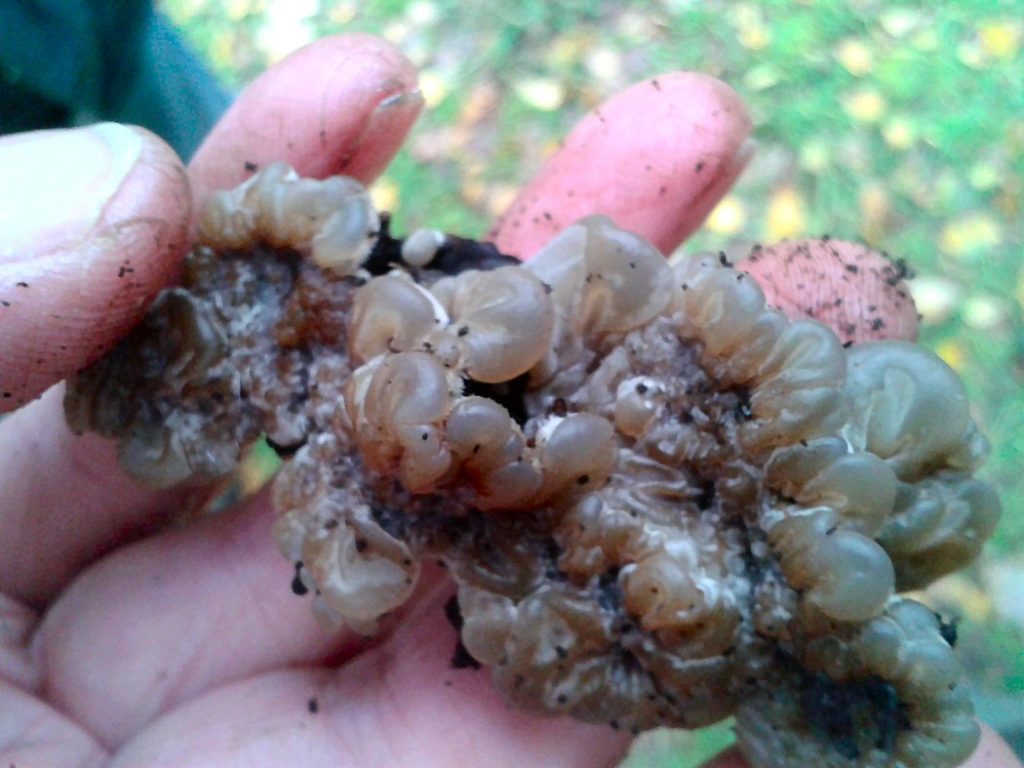
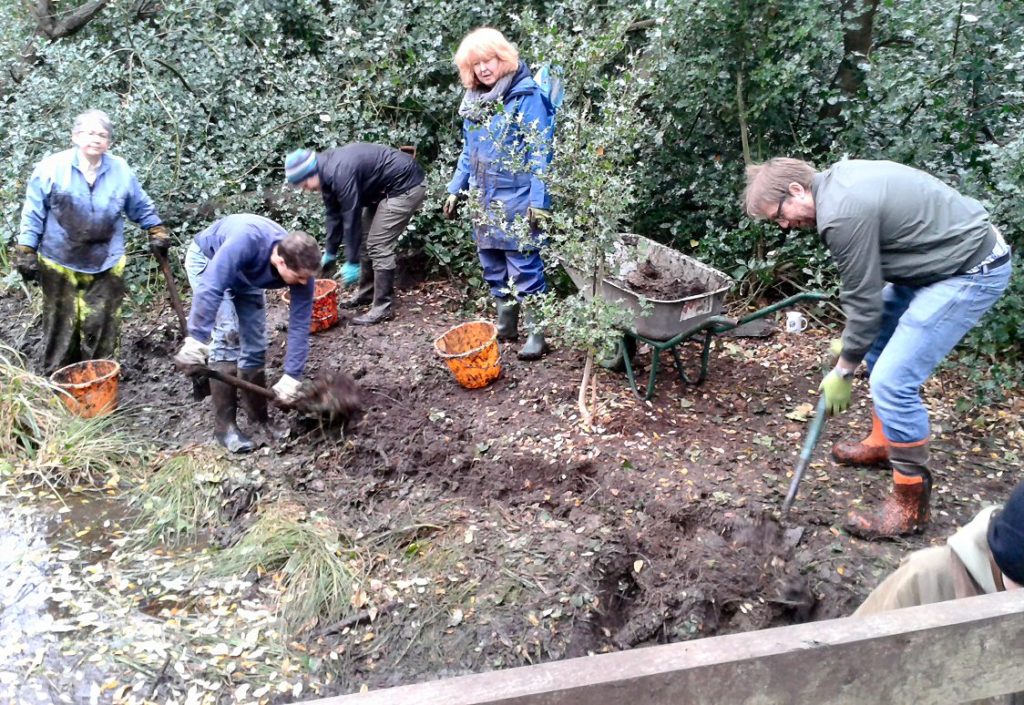
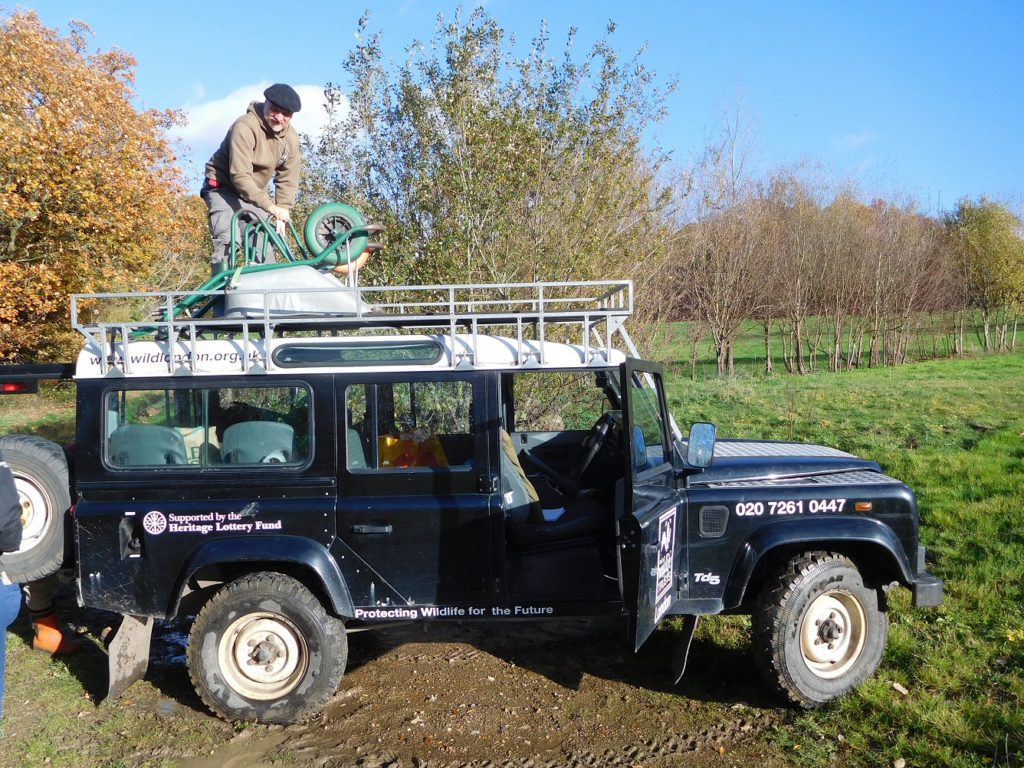
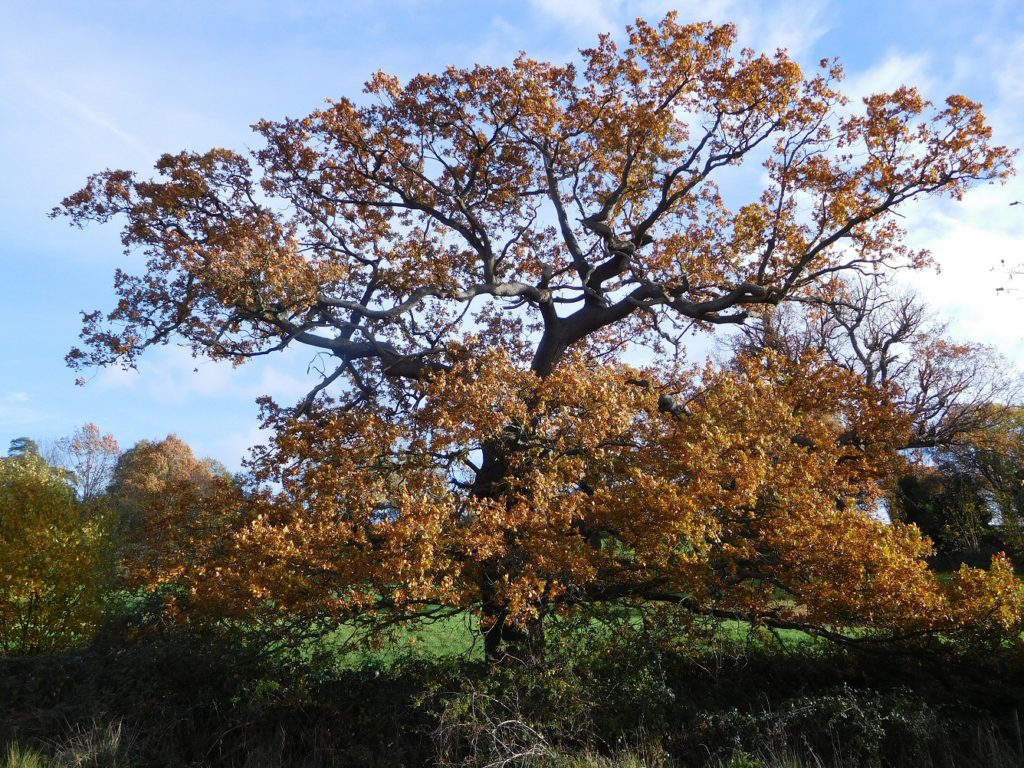
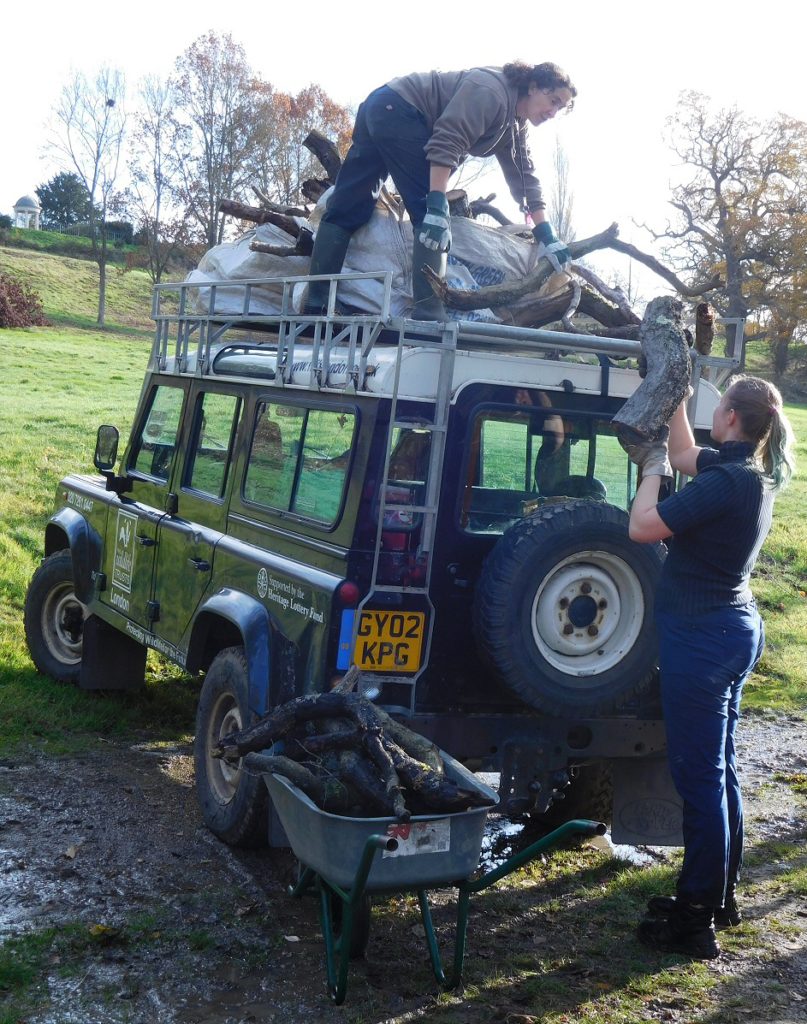
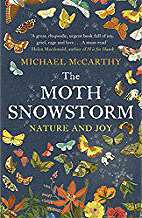
This is a powerful book, one of the few on nature that can simply be called great. Perhaps Rachel Carson’s 1962 Silent Spring was the last one.
McCarthy states that nature is under deadly threat from humanity. We build roads, dams, sea walls, houses, factories; habitat is destroyed. We drive cars, fly in planes, live in houses made of brick or concrete; oil is burnt, releasing carbon dioxide, causing global warming. The extra heat warms the oceans, making sea level rise. The carbon dioxide makes the oceans acidic, threatening species-rich coral reefs. We buy food containing palm oil: the palm plantations march across the tropics, replacing species-rich rainforest. We eat hamburgers. Cattle grazing spreads across the world, replacing more rainforest; methane from cow stomachs joins the atmosphere, accelerating global warming. Every habitat is under attack. A 6th extinction, to rival or exceed the great extinctions like the Cretaceous-Tertiary which destroyed the dinosaurs, is under way already.
McCarthy tells what this means in his own experience, his own country, England. When he was a boy, Buddleia bushes in the suburbs were covered in butterflies: now they aren’t. When he was young, car headlights and windscreens were covered in insects; any night drive in the country seemed to be through a blizzard of flying insects, the ‘Moth Snowstorm‘ of his title. Now, if he sees one moth, a single one, on a journey, it is worthy of note. Nature has been thinned out, not quite to extinction in most cases, but the great, joyful abundance is gone, in one lifetime. Half the farmland birds are gone. Common sights like a field of lapwings, a street of house sparrows, a tree full of starlings, are no more.
Nature matters, McCarthy writes, not just for worthy reasons of biodiversity conservation, or even for pragmatic ones like pollination of insect-pollinated crops like beans and apples and cherries by bees tame and wild. Probably, he suggests with grim humour, some scientist is even now hatching a crop plant that won’t need pollination: even honeybees may soon be redundant.
No, he argues, we need nature because our species, Homo sapiens, grew up with it for 50,000 generations. We feel well in nature, on a walk by a river, in the hills, in meadows with flowers and butterflies in the sunshine, on a wild coast whether of cliffs or salt marshes, with thousands of wading birds in great clouds, the wind on our faces. In a word, nature brings joy. Without it, life is sad and grey, missing something vital, whatever the distractions offered by online shopping and instant messaging and all the rest.
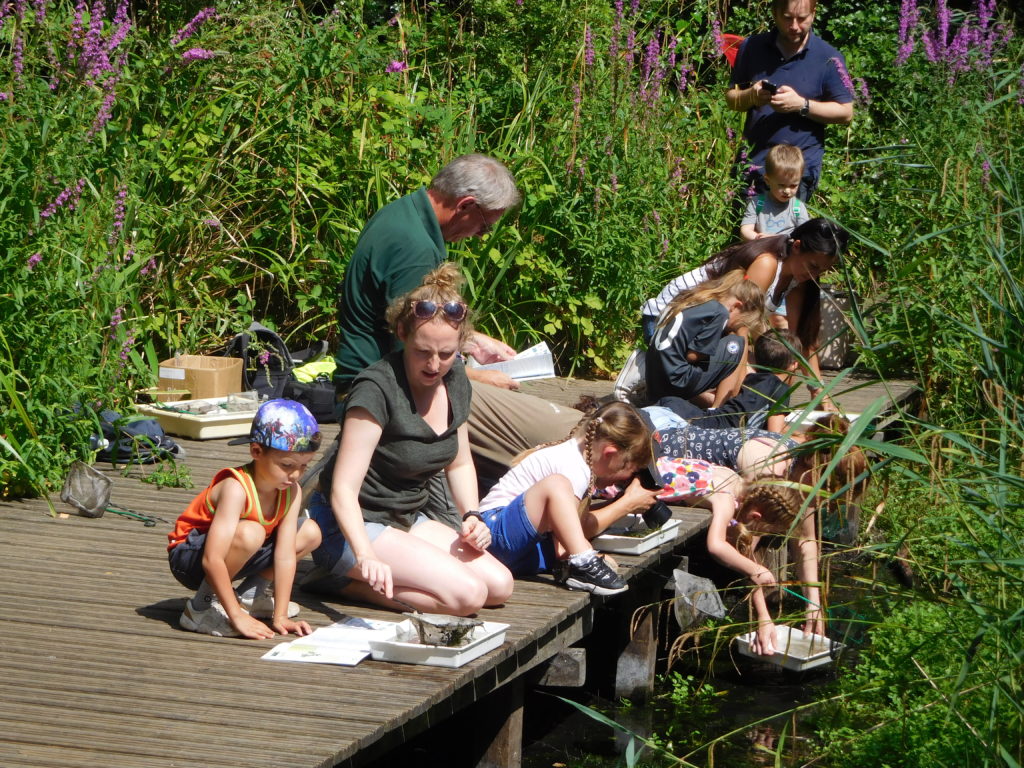
Joy, argues McCarthy, is the one thing that can motivate people to fight for nature. Given that it’s threatened, we need a powerful, universal feeling to drive our politics. As the human population rises and pressures mount, as global warming bites on every continent, we will need to fight hard to keep whatever’s left of nature alive. Our survival, the survival of whole ecosystems and millions of species, depends on it. We need, urgently, to teach people to love nature, for which we need reserves, in cities and outside them, where people can experience the joy of nature for themselves; where children (and adults) can walk and run and play and pond-dip and bug-hunt and laugh and see frogs and foxes and butterflies. Then, and only then, can we urge them to fight.
Buy it from Amazon.com (commission paid)
Buy it from Amazon.co.uk (commission paid)